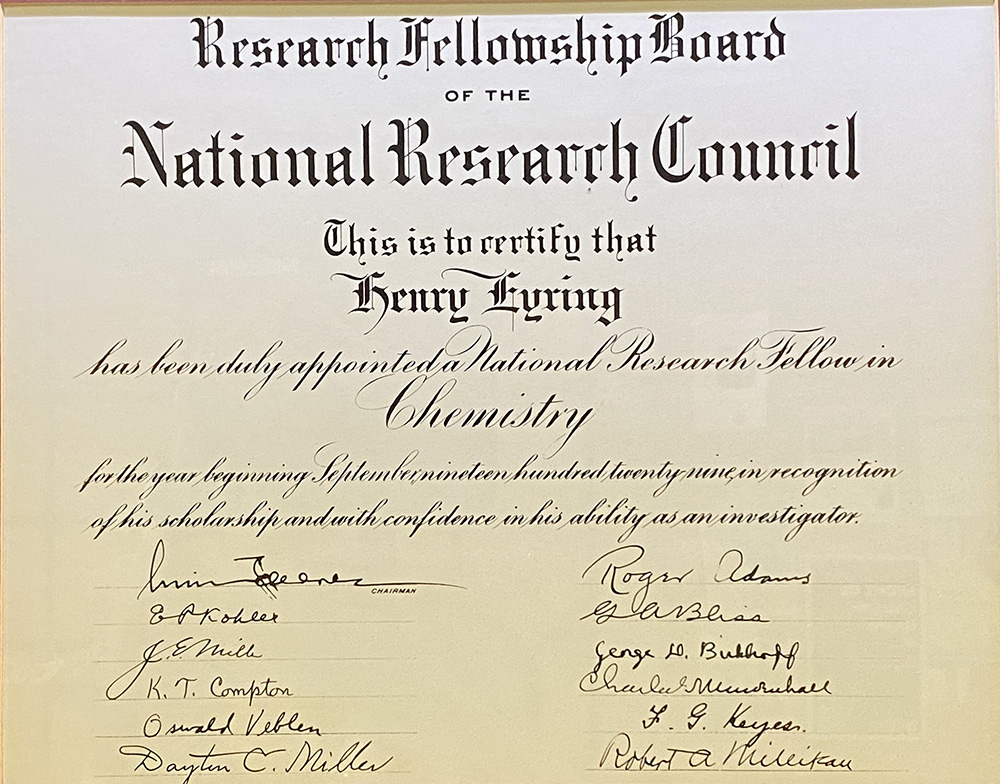The Legacy of Henry Eyring
 |
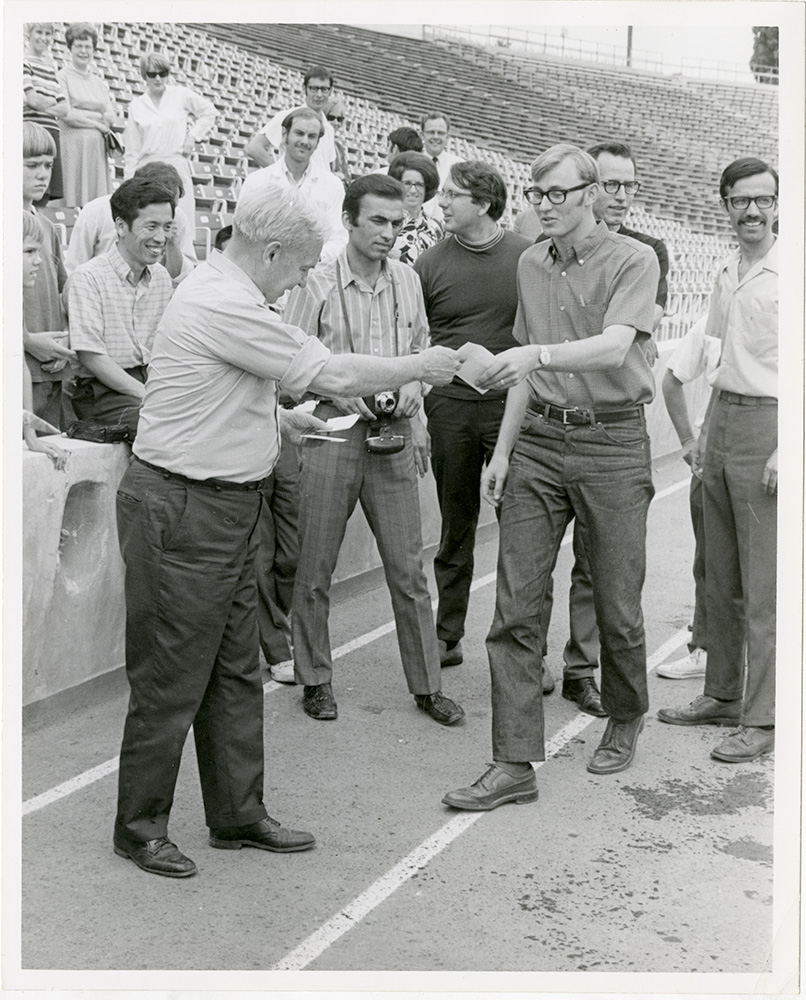 |
This exhibit provides a short history and some insights into the character of Henry Erying, Utah’s most distinguished scientist, for whom this building was named. He was born on February 20, 1901, to Edward Christian Caroline Romney Erying. They were part of the group of Mormons who had settled in Colonia Juarez in the State of Chihuahua in Mexico. Henry’s father was a well-to-do rancher who owned 14,000 acres of cattle range, pasture, and farmland, about 6,000 head of short-horned Durham cattle plus approximately 100 horses. Henry’s paternal grandfather (also named Henry Erying) came from Coburg, Germany, while his paternal grandmother came from the German part of Switzerland. His paternal grandparents met as pioneer emigrants crossing the plains to Utah in the fall of 1860. His maternal grandparents were of English stock; the Romney and Cottam family names are familiar in Utah.
Henry Erying was an accomplished horseman by the age of three. He remembered owning three different horses, the last of which was his favorite, up to the time that the Eyring family and other colonists left Mexico because of the social unrest accompanying the Mexican Revolution. The family moved to El Paso in mid-july of 1912, anticipating that they would return home within a few weeks. As the weeks stretched into months they found themselves in fairly desperate financial circumstances. At the age of eleven Henry took his first job as a cash boy in Calasher’s Department Store for the purpose of helping his family make ends meet. His salary for this job was $2.00 for a six–day week (for calibration purposes, note that a loaf of bread or a quart of milk each cost $.05 in 1912).
After deciding that there was no chance for returning to Colonia Juarez, the family moved to Pima, Arizona, in 1912, where Henry’s father had purchased a farm by making a small down payment. After helping to clear the land, Henry enrolled at the elementary school in Pima, Arizona, completing the eighth grade in 1915. For this he received the largest diploma awarded to him in his career, a copy of which is displayed in the upper left corner of the display case in the Henry Eyring Building. For comparison, his 1927 Ph.D. degree diploma is displayed right below it.
Henry’s high school education was obtained at a church academy in Thatcher, Arizona, six miles from Pima. It was at this time that his special skills in mathematics and sciences first became evident. His science teacher, Alma Sessions, noted Henry’s talents and urged him to attend the University of Arizona where it was recommended that he study either electrical or mining engineering. With the aid of a $500 State Fellowship won competitively in Graham County, Arizona, majoring in Mining Engineering. The accompanying contemporary photo suggests the enthusiasm and charm which sustained him throughout his long academic career.
Henry enrolled in the University of Arizona in 1919 and distinguished himself in the study of science, mathematics, and engineering and also by waiting on tables at the campus cafeteria. Thus he was able to send a little money home to help with the payments on the farm. He also wrote a senior thesis with Professor Cressy in the mathematics department on the theory of the aerial tramway. Among the medals displayed in the case is the Award of Merit presented to Henry in 1960 as part of the 75th anniversary ceremonies of the University of Arizona.
Also during his college career, he had summer jobs as a miner in the Inspiration Copper Mine in Miami, Arizona, and at the Sacramento Hill Mine in Bisbee, Arizona. In the fall of 1923 he worked on a Master’s thesis concerned with the separation of sulfide ores by the selective flotation under the direction of Professor Thomas Chapman. This was followed by another summer job at the United Verde Smelter in Clarksdale, Arizona.
These work experiences during his college years and the accompanying exposure to the
hazards of underground explosions and sulfur dioxide fumes from smelting operations
made an indelible impression upon Henry and affected his future career in significant
ways. In particular he elected to return to the University of Arizona as an instructor
rather than actively pursuing his career as a mining engineer.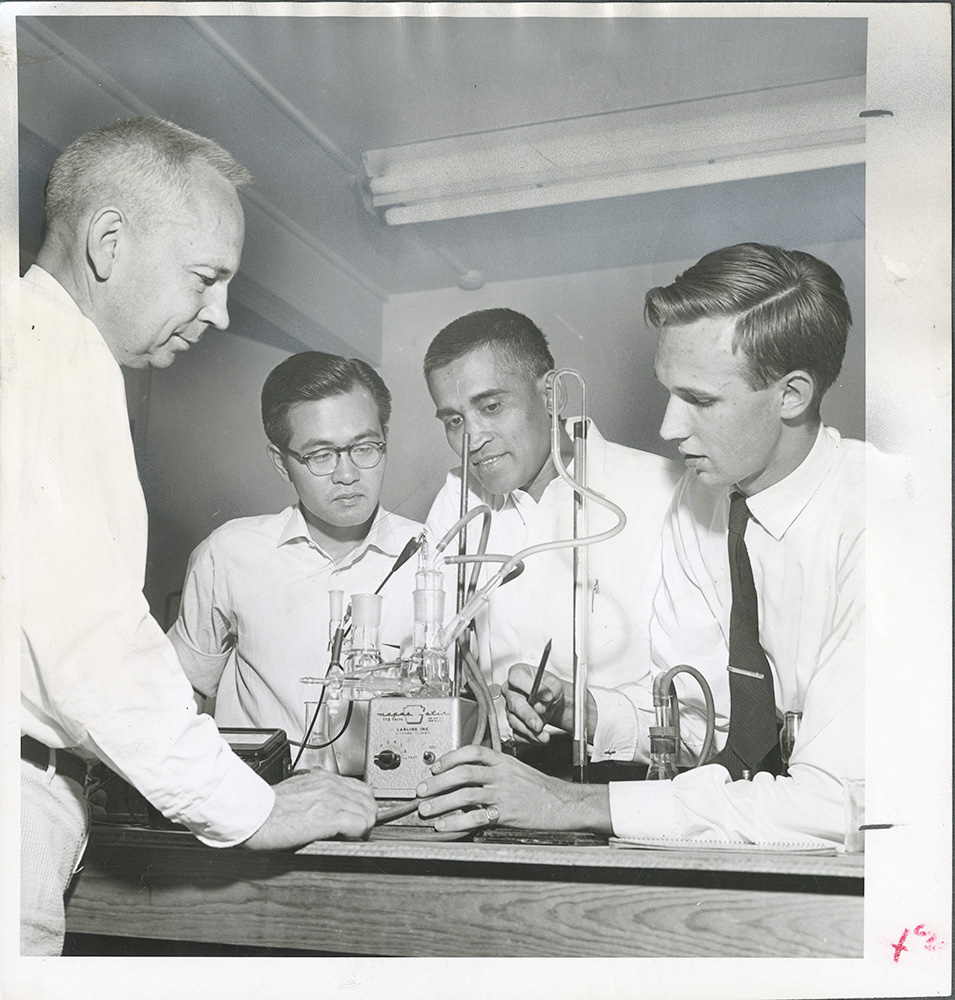
Toward the end of his first year of teaching in 1925, he was recommended to the University of California at Berkeley for Ph.D. studies in Chemistry. He accepted the invitation to attend Berkely, enrolling there in September 1925. He finished his Ph.D. in August, 1927, after completing a thesis with Professor George E. Gibson concerned with the measurement of stopping powers and ionization efficiencies of gaseous molecules for alpha particles from polonium. With this work he demonstrated that the stopping power of various gasses is nearly independent of chemical bonding while the ionization yield depends much more strongly on the subtle details of chemical bonds and energy levels in molecules.
In the fall of 1927 Henry was appointed Instructor at the University of Wisconsin
where he continued his experimental work in reaction kinetics. In 1929 he was granted
a National Research Fellowship to work with Professor Max Bodenstein at the University
of Berlin. His award certificate, signed by many of the most distinguished chemists
and physicists of the day, is in the display case. Shortly before leaving for Berlin
he learned that Professor Bodenstein was going to spend that year at Princeton University
in connection with the dedication of the new Frick Chemical Laboratory. For this reason
Henry decided to work with Professor Michael Polanyi at Berlin’s Kaiser Wilhelm Institute. 
Henry and his wife, Mildred Bennion Eyring, set sail for Europe with this goal in mind. After arriving, they discovered that Professor Polanyi was also in the United States. However, the laboratory of Professor Fritz Haber was then occupied by leading kinetics of the day, along with leading workers in the new field of quantum mechanics. Then, as later, Henry Eyring had a little need for research direction, and he quickly plunged into an experimental program involving what would now be called reaction dynamics. This involved the spectroscopic identification of specific excited states formed by the reaction of sodium vapor with chlorine. On Professor Polanyi’s return they completed this interpretation of reaction rates. They used Fritz London’s approximate quantum mechanical solution for the hydrogen molecule (the Heitler-London approximation) as a starting point for constructing a potential surface for three hydrogen atoms. Disappointed in these results, they then moved to a semi-empirical method now known as the London-Erying-Polanyi-Sato, or LEPS, potential surface method for explaining the rates of chemical reactions. This opened up an entirely new world of chemistry as it yielded the first fundamental interpretation of the details of how chemical bonds are made and broken in a chemical reaction.
While in Berlin, Henry Erying received disturbing news that his younger brother, Joseph,
had been determined by the State Department to be a Mexican citizen. This meant that
Henry also was a Mexican citizen holding an illegal passport and a fellowship to which
he was not entitled. However, when he consulted the American Consulate in Berlin,
it was ruled that he had acted in good faith and that he should retain his passport
until his scheduled return to the United States, at which time he should proceed with
naturalization (accomplished five years later in Trenton, New Jersey).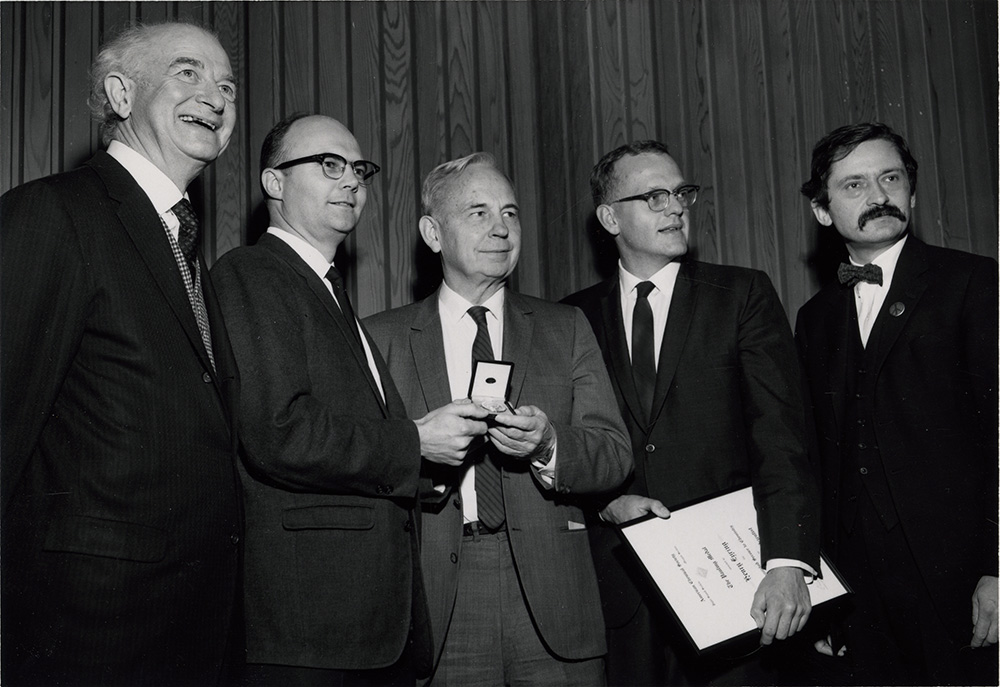
Following the completion of the exciting and productive research in Berlin, Henry joined the University of California at Berkeley as a junior faculty member for the Fall Quarter of 1930. He further developed the quantum mechanical approach to the explanation of reaction kinetics. Also, the Eyring’s first son, Edward (better known in this department as Professor Ted Eyring) was born in Oakland, California, on January 7, 1931. That spring Henry Eyring journeyed to Indianapolis to attend the annual meeting of the American Chemical Society and presented a paper using potential surfaces to explain reaction mechanisms in the hydrogen/halogen system. This paper engendered a great deal of interest, and Professor Hugh Taylor invited him to go to Princeton, rather than return to Berkeley, and to present lectures there on the quantum mechanical calculations of reaction rates. This led to his faculty appointment in the Department of Chemistry at Princeton and to an extremely productive 15 years spent in that department.
 |
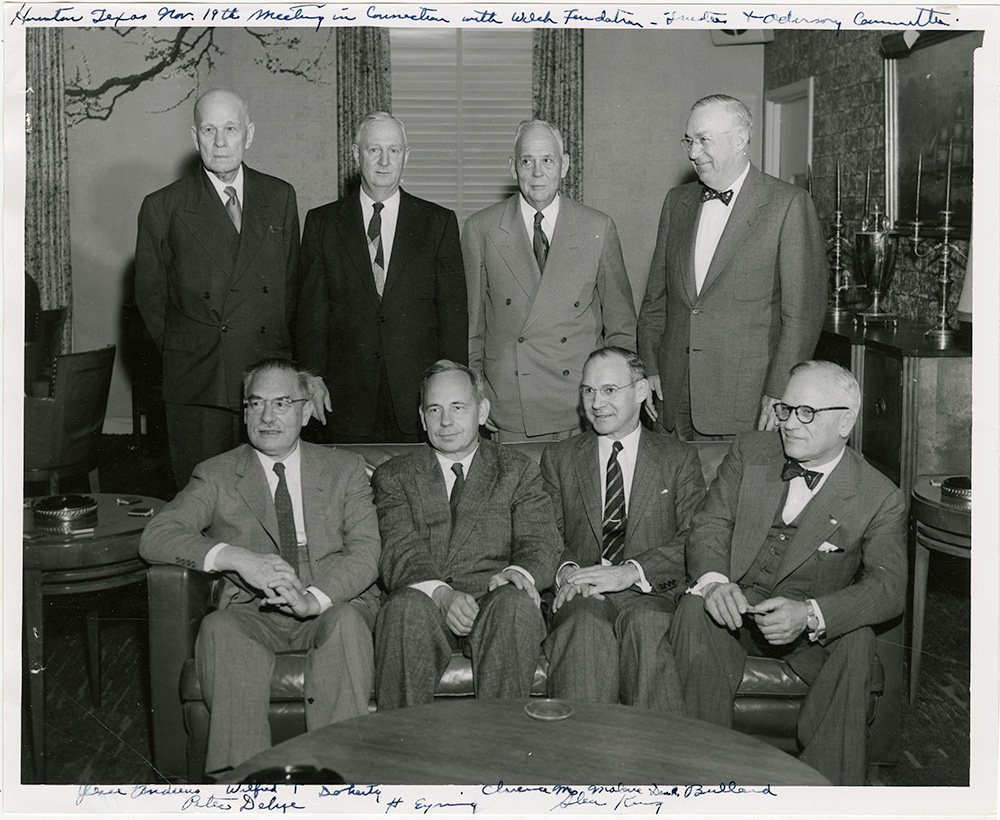 |
In the early years of the Princeton experience, in November, 1934, he submitted to the Journal of Chemical Physics the paper entitled “The Activated Complex in Chemical Reactions” which showed that rates could be calculated using quantum mechanics for the potential surface, the theory of small vibrations to calculate the concentration and rate of crossing of the potential energy barrier. Whereas many people were enthusiastic about his breakthrough, others were skeptical. An anonymous referee recommended that the paper be rejected. (This is a course of reassurance to some of us).
This paper was completed in 1935 in a hospital in Laporte, Indiana where Henry was convalescing from an automobile accident which occurred while he was returning to Princeton. In the second of a long series of papers applying his theory of reaction rates, Henry’s secretary, Lucy Darcy, inadvertently invented the “double-dagger” or “Cross of Lorraine” which symbolizes the activated complex configuration in all contemporary textbooks, because her typewriter did not have an asterisk key. She substituted an overstruck diagonal and equals sign for the asterisk in Henry’s hand-written manuscript, which the typesetter interpreted as the Cross of Lorraine. This distinctive symbol has been universally used by scientists since that time in the thousands of research papers and books dealing with this subject.
The detailed description contained in this paper of the way chemical reactions proceed still dominates the formalism used for the description of reaction kinetics. All but two of the nine books and many of the nearly 700 papers published by Henry Erying and collaborators elaborate the application of what is now known as the Eyring activated complex theory to diverse fields of chemical reaction, ranging all the way from explosions through chemical reactions in gases, liquids, and solids to applications in biology and medicine.
Henry Eyring’s second son, Henry Bennion, was born on May 31, 1933, and his third son, Harden Romney, on August 20, 1939. Some family photos, inclduing dates, are shown below.
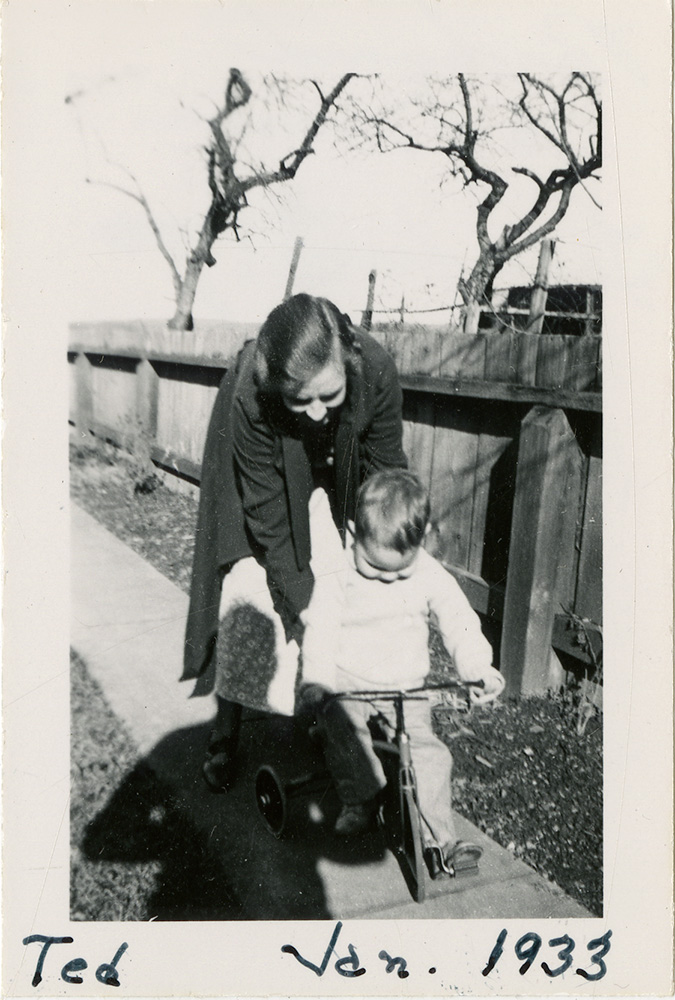 |
 |
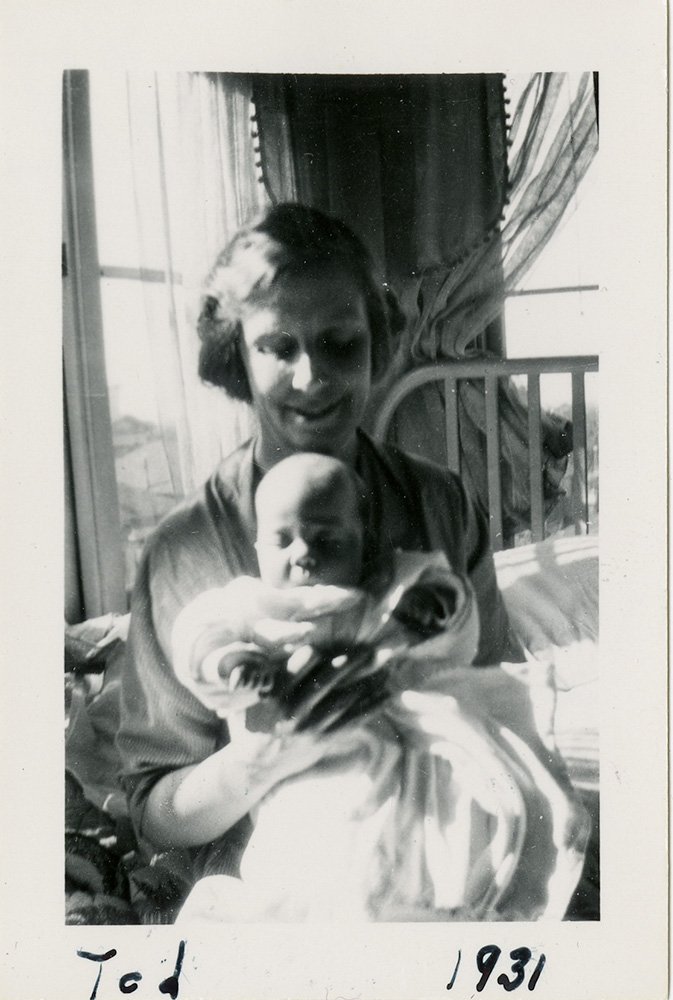 |
The Eyring family–Henry, Mildred, and their three sons–moved from Princeton to Salt Lake City in the summer of 1946. The story behind their move, as told in Henry’s own words, is as follows:
“In the spring of 1946, Ray Olpin, newly installed president of the University of Utah, visited us in Princeton to offer me the job of Dean of the School of Mines or of the graduate school. My wife said that I should be the one to decide what we should do. Since at Princeton I had nine graduate students working with me, had been a professor since 1938, and had what was considered a high salary at that time, the choice was difficult. As Utah I would have to start the doctoral program and build up my own research program. As a result I decided not to go and wrote a letter to President Olpin to that effect. The next day Mildred asked what decision I had made. I told her, and she was crushed. We has lived away from her family and the Salt Lake mountains for 19 years. Although Princeton had been most pleasant, she wanted to go home. She said nothing at the time I told her of my decision, but prepared a nice letter that she asked me to read when I got to the University. When I realized her need to return home, I naturally agreed.’
“I immediately told Professor Taylor of the change in plan. His response was, ‘I told President Dodds the storm wasn’t over. We have more money than the University of Utah. What do you want?’
“ ‘Nothing,’ I replied. ‘We’re going.’
“ ‘One can’t do business with a crazy man,’ he exclaimed. ‘Do you mind if I talk with your wife?’
“ ‘Help yourself,’ I said.
“He and Mildred were well acquainted, and they had a pleasant conversation, but nothing was changed. So in August 1946 we started our new adventure at Utah, where I was Dean of the Graduate School and Professor of Chemistry.”
 |
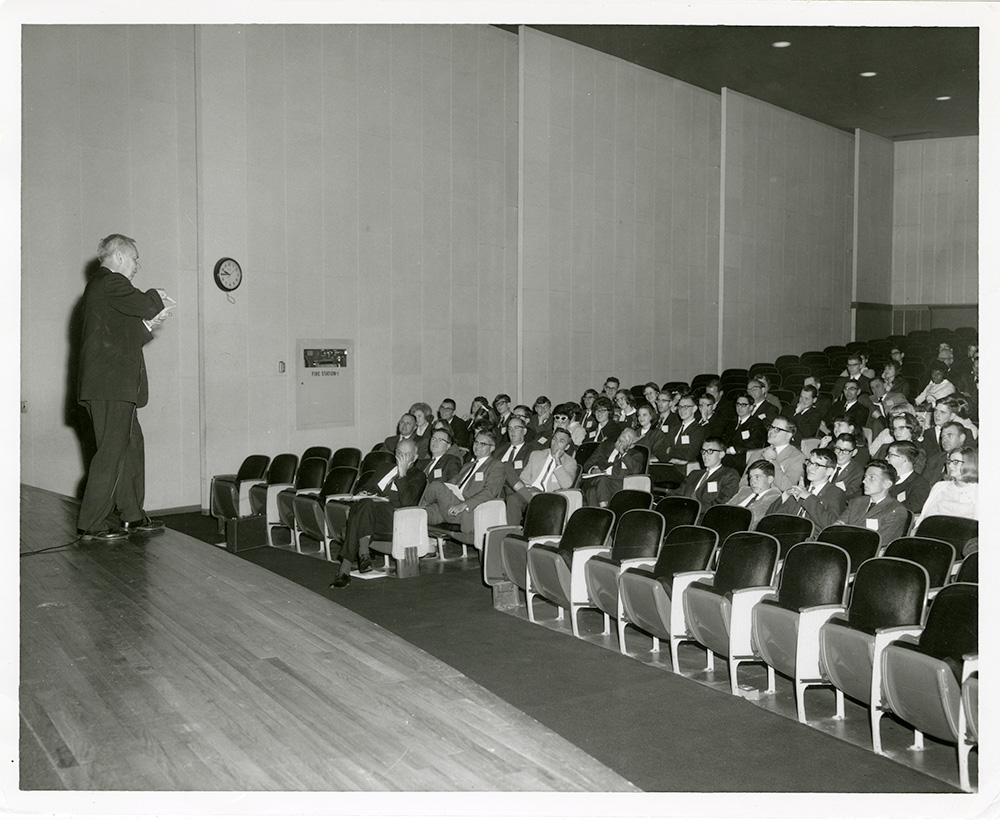 |
Mildred Eyring died of cancer June 25, 1969, after a lingering illness. In 1971 Henry married Winnifred Brennan and expanded his family to include her daughters–Elanor, Patricia, Joan, and Bernice. Those of us who knew him well during the last years of his life knew how proud he was of his second family and how much the experience of having teenage and slightly older daughters in the family was appreciated.
 |
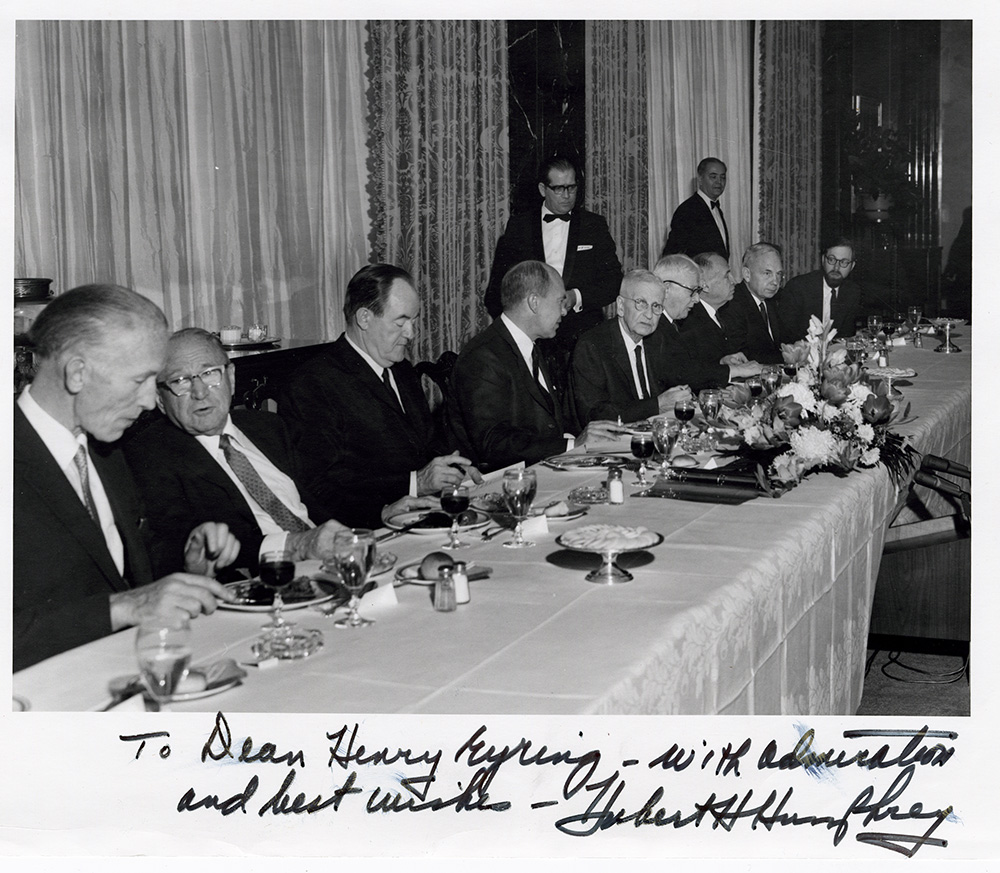 |
One of the interesting characteristics of Henry Eyring’s life is that he found part of the motivation for his distinguished scientific career in his religious faith. A devout disciple and constant “missionary” for the Church of Jesus Christ of Latter-day Saints, he considered the essence of true religion to be an honest search for knowledge of all things. In his book The Faith of a Scientist he said, “...true religion was never a narrow thing. True religion concerns man and the entire universe in which he lives. It concerns his relationships with himself and his fellow men, with his environment and with God his creator.” “...The scientific spirit is a spirit of inquiry, a spirit of reaching out for truth…Science has also in effect strengthened religion by assisting in shifting the grain of truth from the chaff of imagined fable…Just as science has proved a help to religion, so religion in its finest expression has given impetus to science…It is the mission and opportunity of religion to teach men ‘the way, the truth, and the life’ that they might utilize the discoveries of the laboratory to their blessing and not to their destruction.”
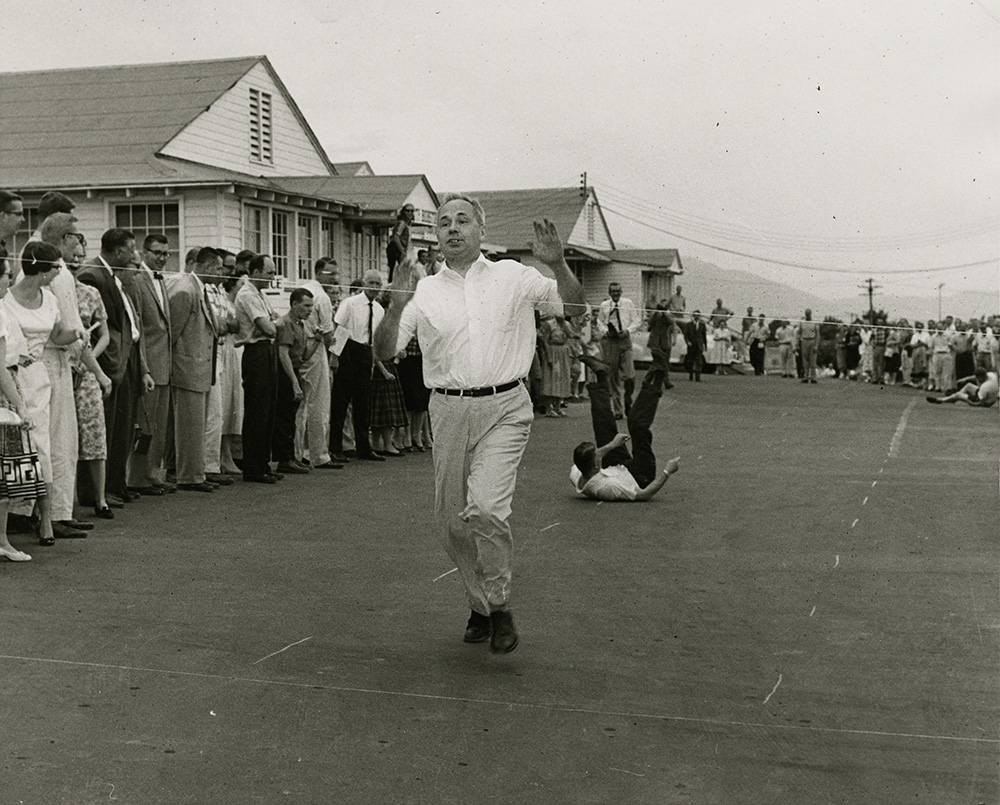 |
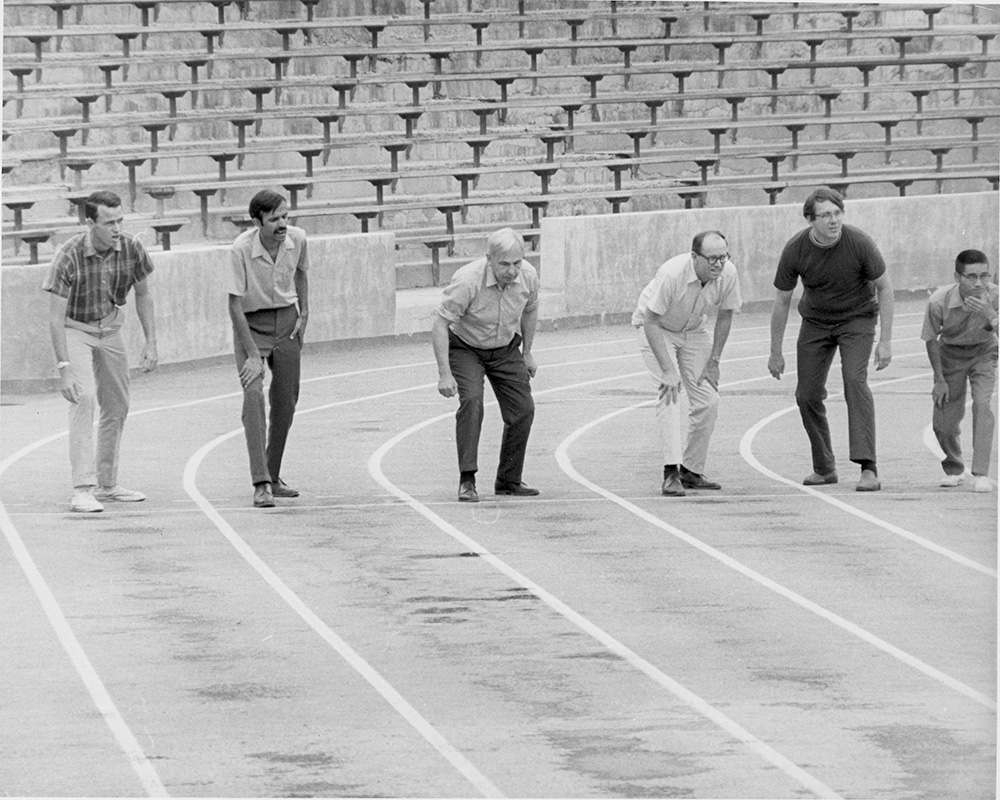 |
This brief narrative would be woefully incomplete if it failed to note Henry’s pride in physical fitness. In his youth (up to age 60) Professor Eyring would frequently startle visitors by jumping on the table in his office. He walked to work most of his life (a four mile round trip) lugging an overstuffed briefcase and conducted an annual footrace with his students and co-workers (featured on “On the Road with Charles Kuralt” in 1973) which he seldon won but always finished. The photographs above suggests how much Henry enjoyed the event. The crowning achievement of his campus athletic career occurred in 1975 when his friend and Utah’s Commissioner of Higher Education Homer Durham–an avid tennis player and golfer–challenged him to a contest in these sports, plus frisbee throwing and the traditional fifty yard dash. Although Henry had never participated in any of these sports except the footrace previously, the challenge was irresistible. After several months of clandestine practice by Henry, the appointed day arrived. To the amazement of the challenger–and most of the audience–Henry swept the field and was crowned the “Decathlon Champion” of the University.
In 1980, about one year before he died, this building was dedicated to Henry Eyring.
During the dedication University President David Gardner characterized Henry as “not
just a professor. He is a college.” Elder Neal Maxwell referred to him as “the most
distinguished Mormon scientist of this dispensation.” 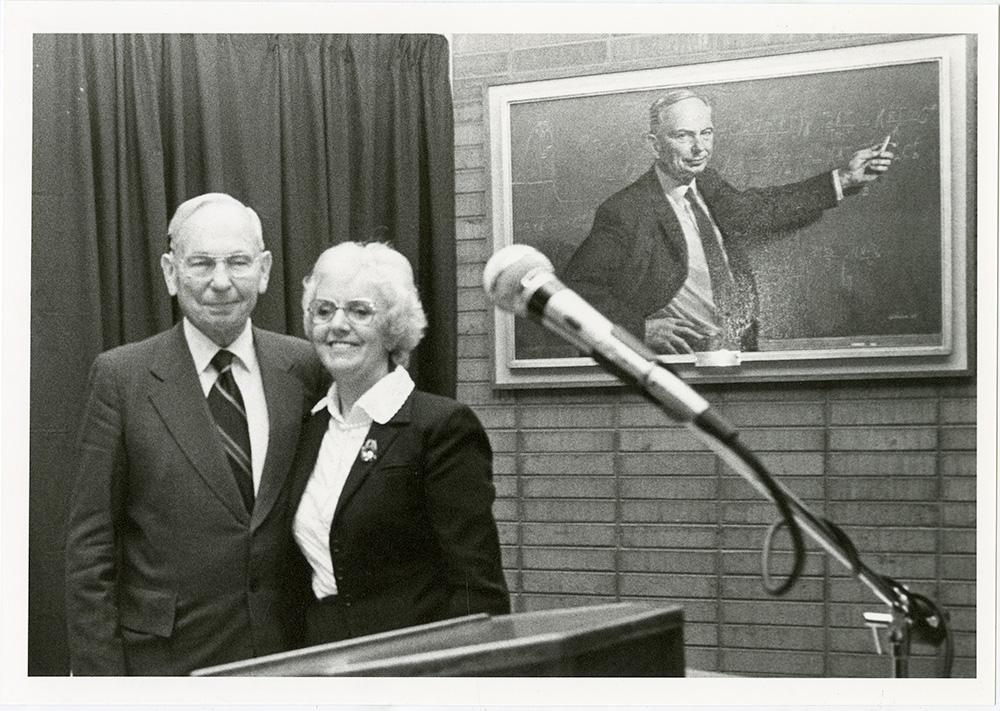
Henry Eyring died of complications following congestive heart failure on December 26, 1981. Five years earlier, reminiscing in Annual Reviews of Physical Chemistry for 1977, he described his life’s work as that of a builder of models. The essential features of this endeavor were described as follows:
- “There is always a model which will explain any related set of bonafide experiments.
- Models should start simple and definite enough that predictions can be made.
- A model is of limited value except as it correlates a substantial body of observable results.
- The models that suggest important new experiments can be useful even if the theory requires significant modification.”
Henry also considered himself a person who was rather uninhibited in both his work and his personal life, possessing a certain mathematical facility and more fascination with the broad aspects of a problem than with details. The photographs and momentos in this display elaborate on his assertion. His former colleagues and students heartily agree with this assessment. We are also most grateful for his impact on this campus and for the privilege of knowing Henry Eyring both as a delightful human being and singularly talented scientist.
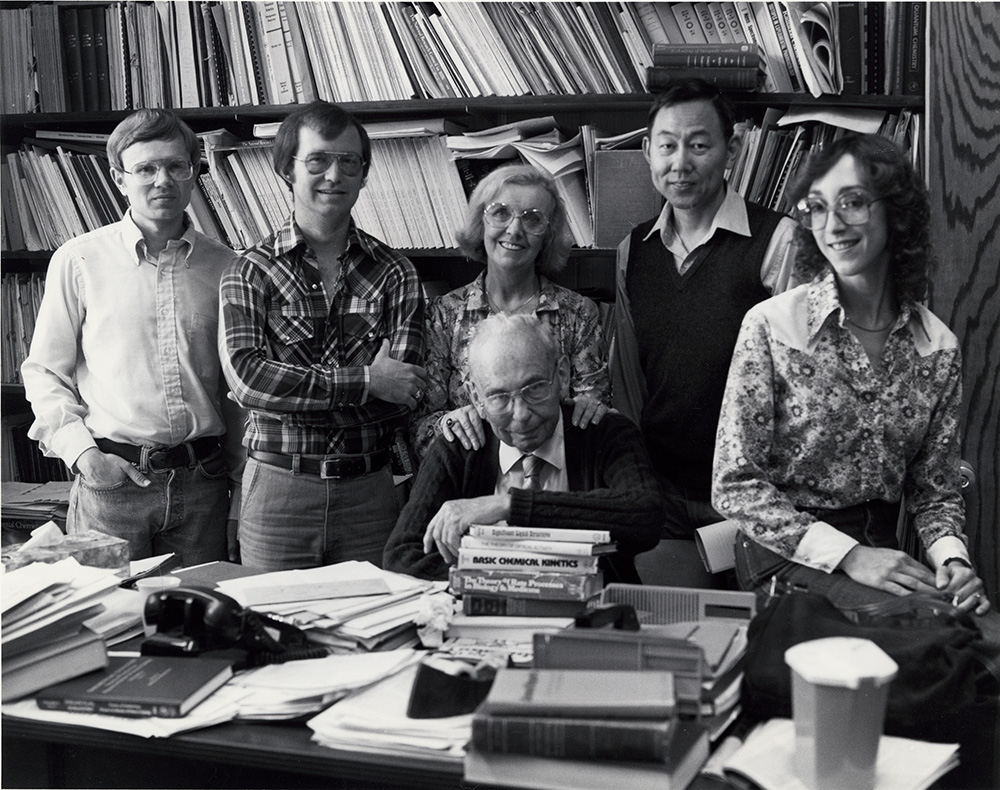
 |
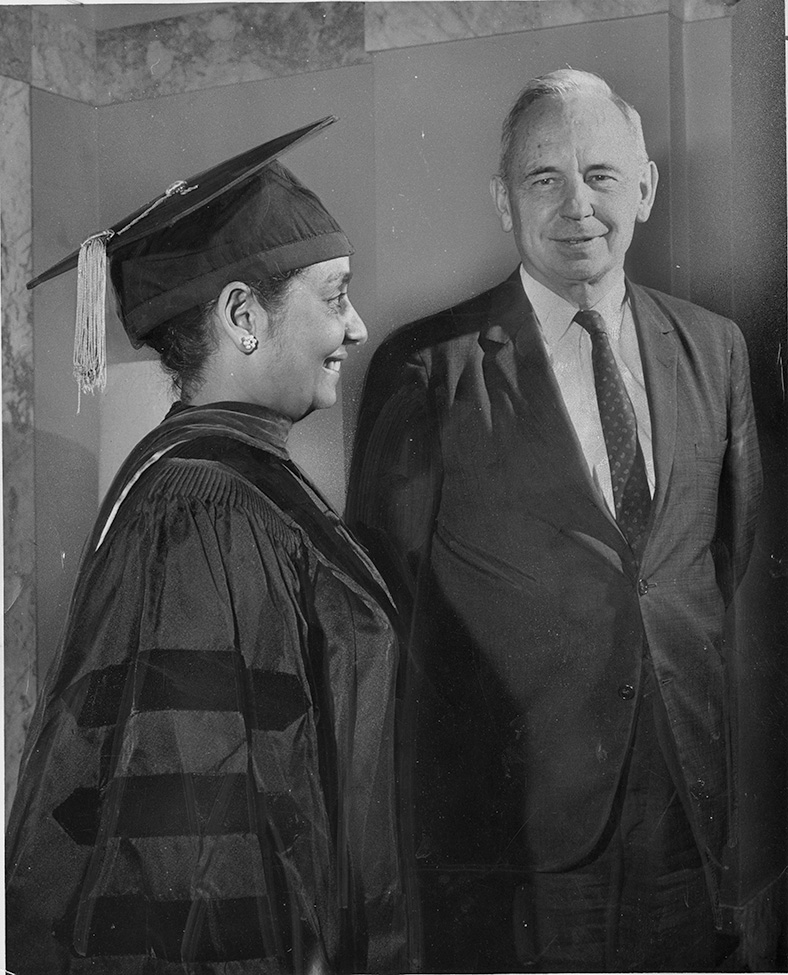 |
Henry Eyring Memorial Exhibit
Dedicated September 25, 1987
(Located in Henry Eyring Chemistry Building, 2nd floor)
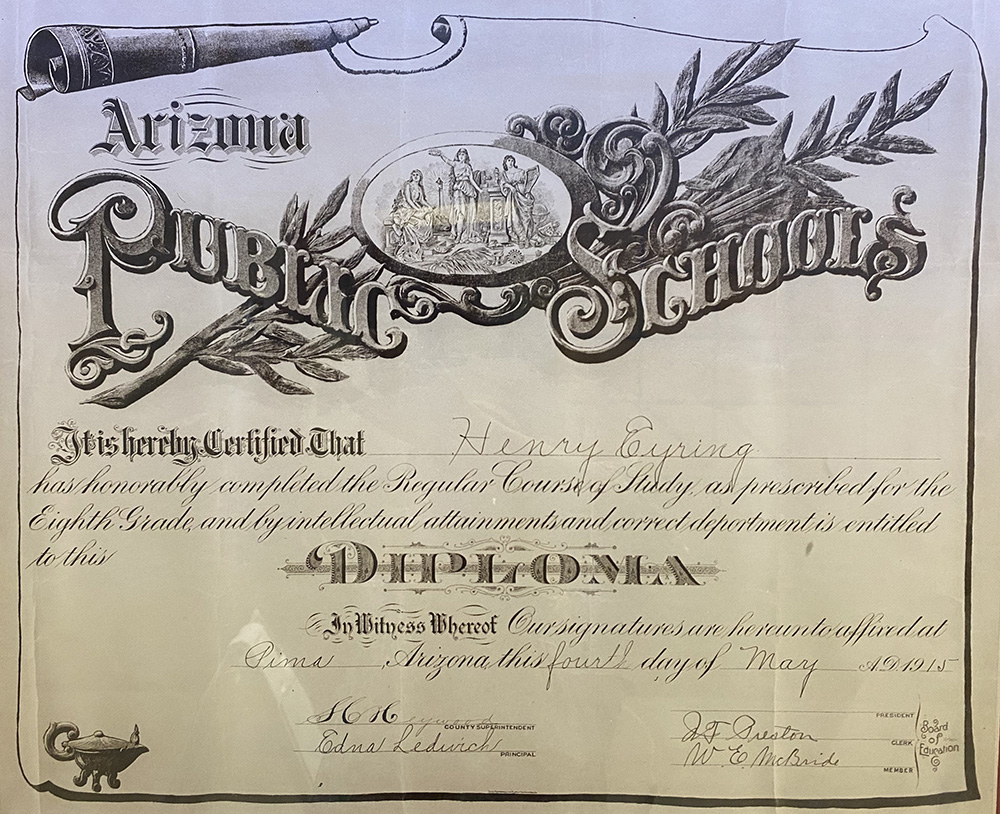 |
Eighth Grade Diploma Awarded to Henry Eyring in 1915 when he attended the Pima, Arizona Public School system. |
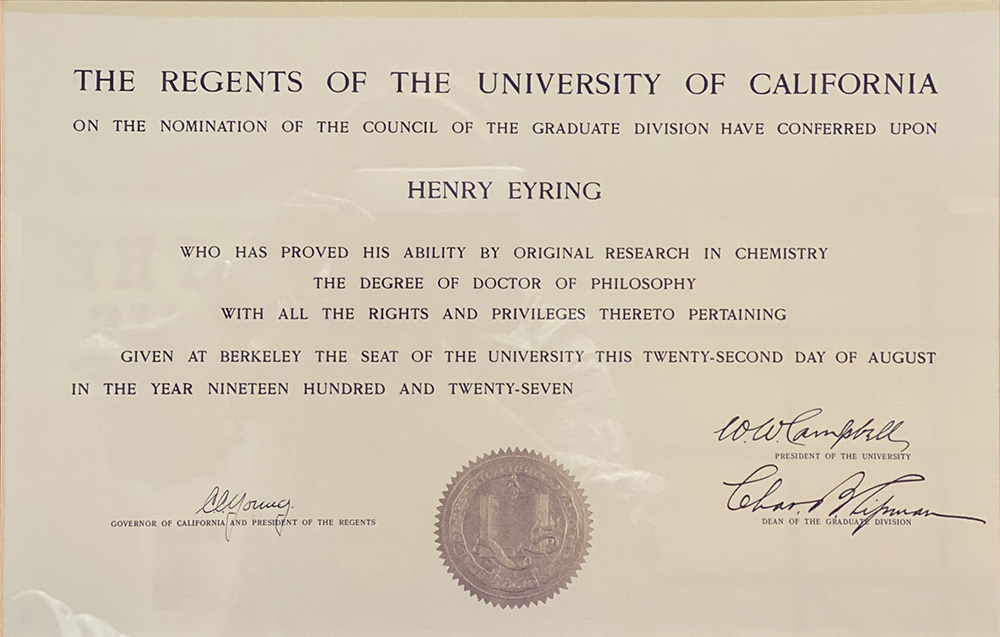 |
Ph.D. Diploma Awarded to Henry Eyring in 1927 by the University of California. |
|
|
National Research Council: Post-Doctoral Research Fellowship Awarded in 1929 by the National Research Council on the mistaken assumption that Henry Eyring was a United States citizen. At the time, he was actually a Mexican Citizen, he later became a naturalized citizen in the United States.
|
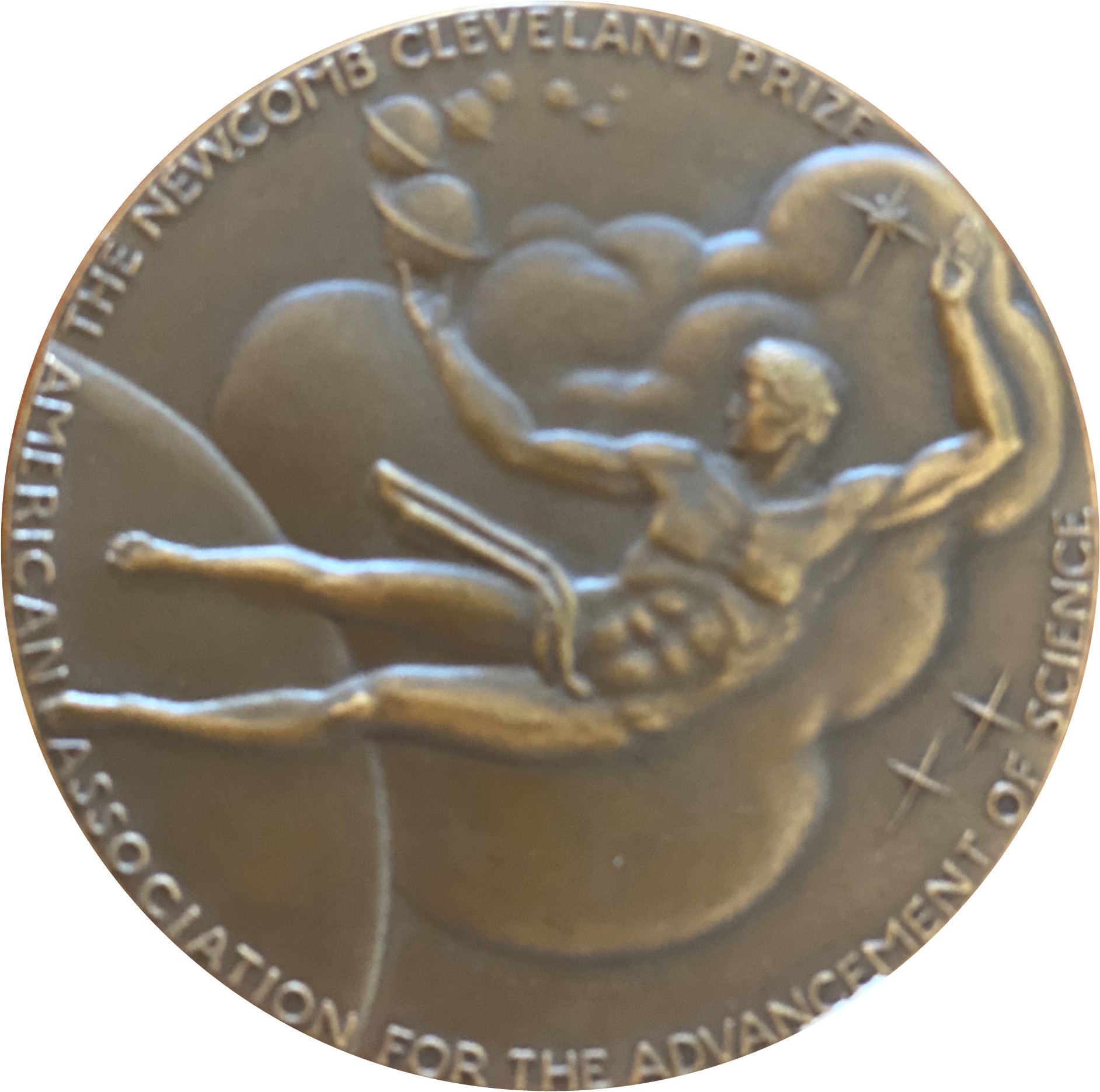 |
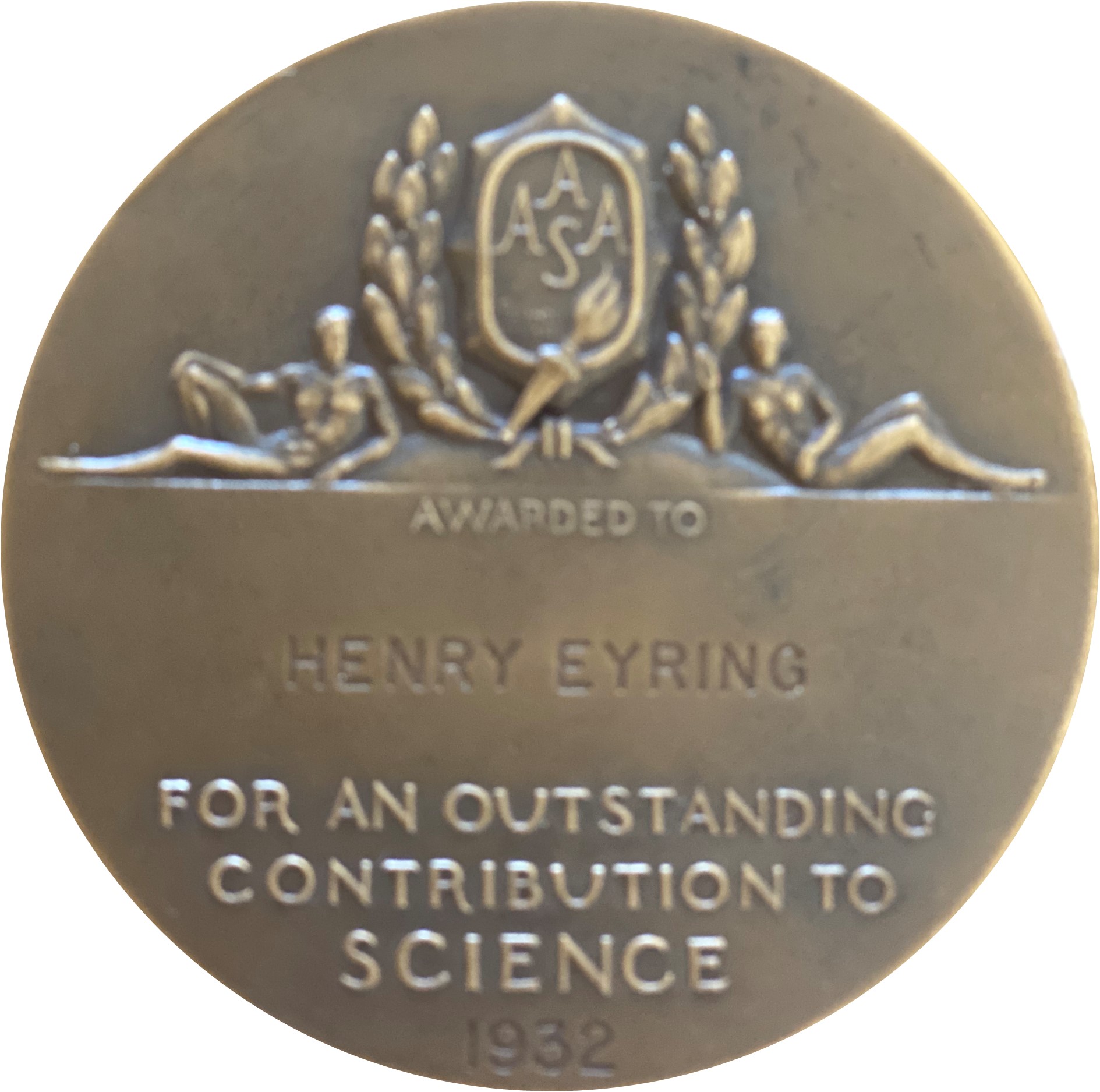 |
The Newcomb Cleveland Prize Awarded by the American Association for the Advancement of Science in 1932. Presented to Henry Eyring for his Outstanding Contributions to Science. |
 |
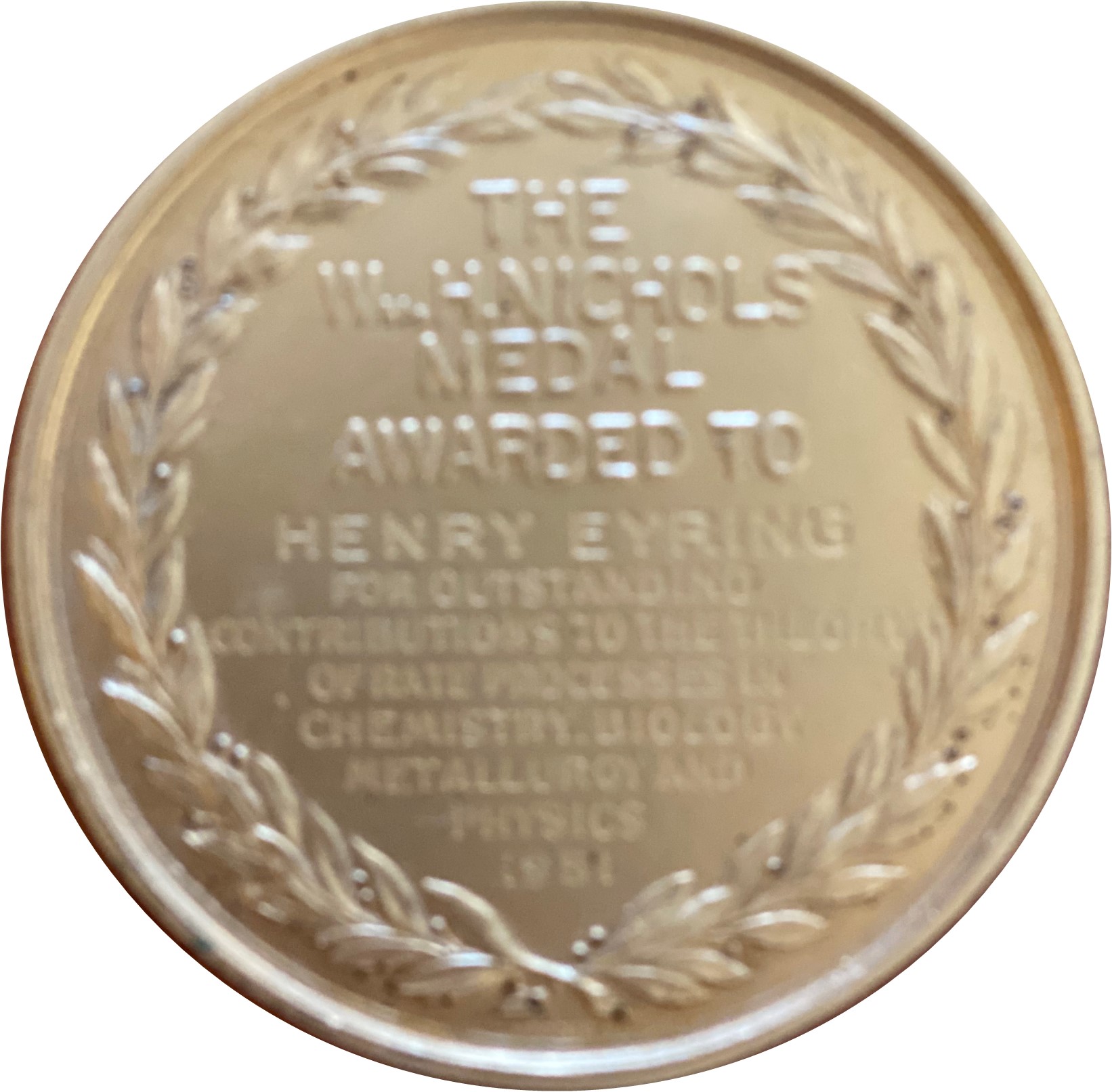 |
W.H. Nichols Medal Awarded by the New York section of the American Chemical Society to Henry Eyring in 1951 for his Outstanding Contributions to the Theory of Rate Processes in Chemistry, Biology, Metallurgy, and Physics. |
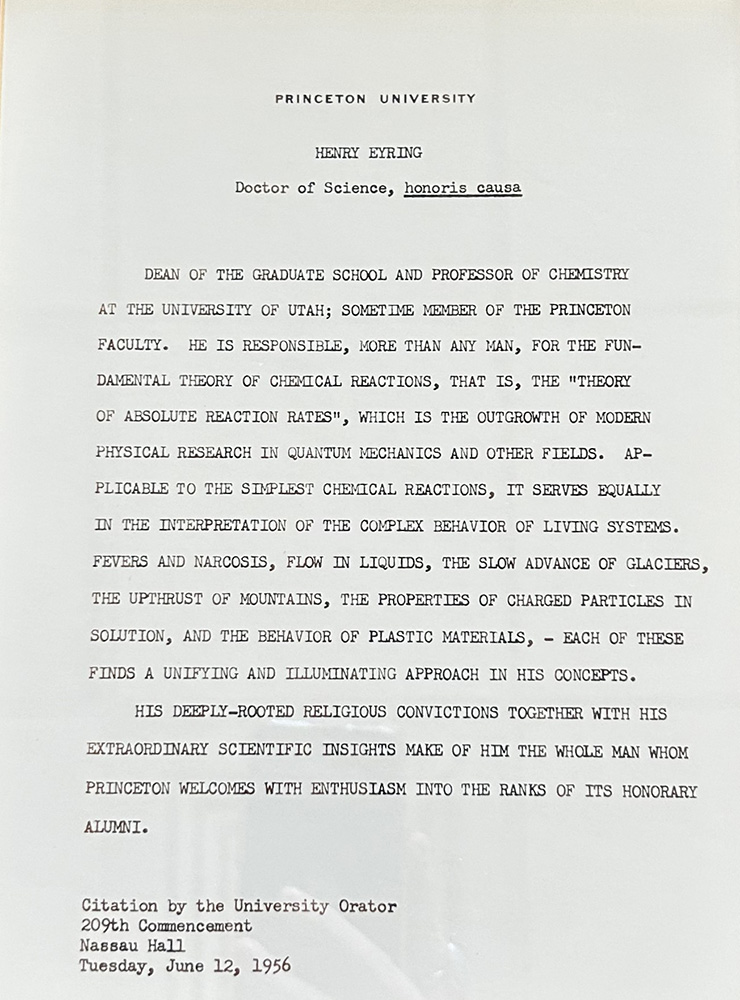 |
Honorary Doctor of Science Degree Awarded by Princeton University in 1956. Presented to Henry Eyring while he was the Dean of the Graduate School and a professor of Chemistry at Princeton. |
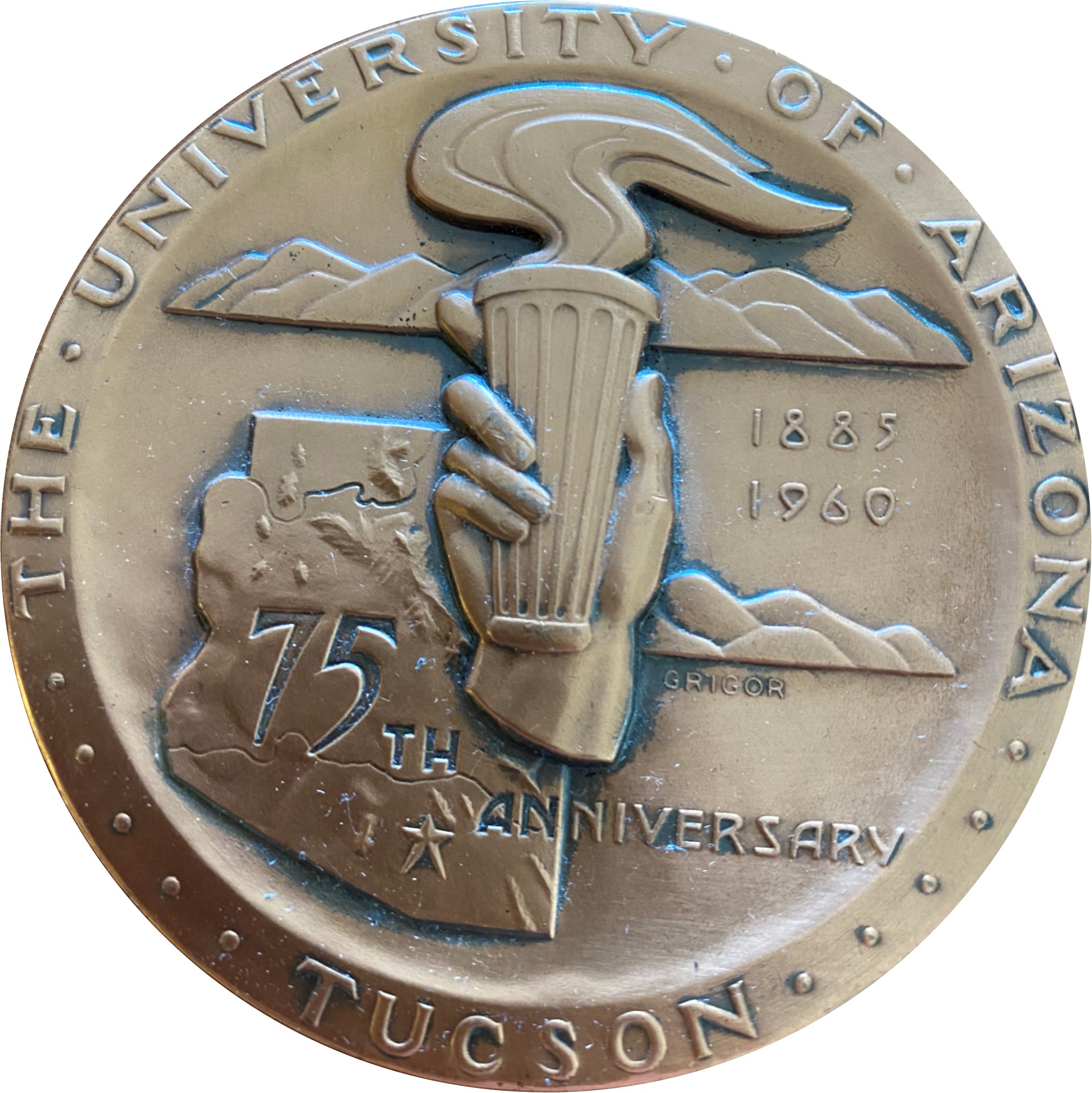 |
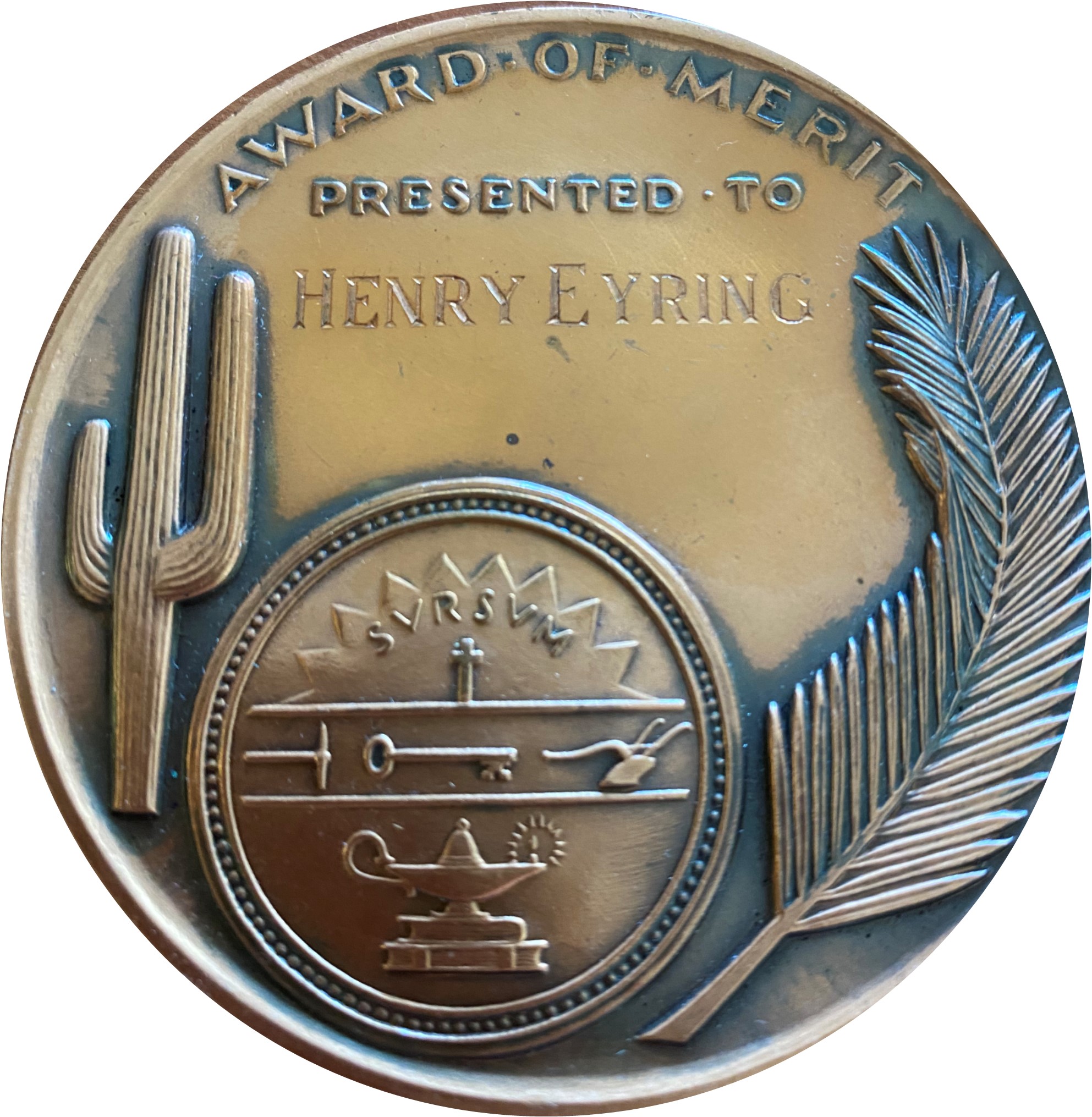 |
University of Arizona Distinguished Alumni Medal Award of Merit presented to Henry Eyring by the University of Arizona at Tucson in 1960. |
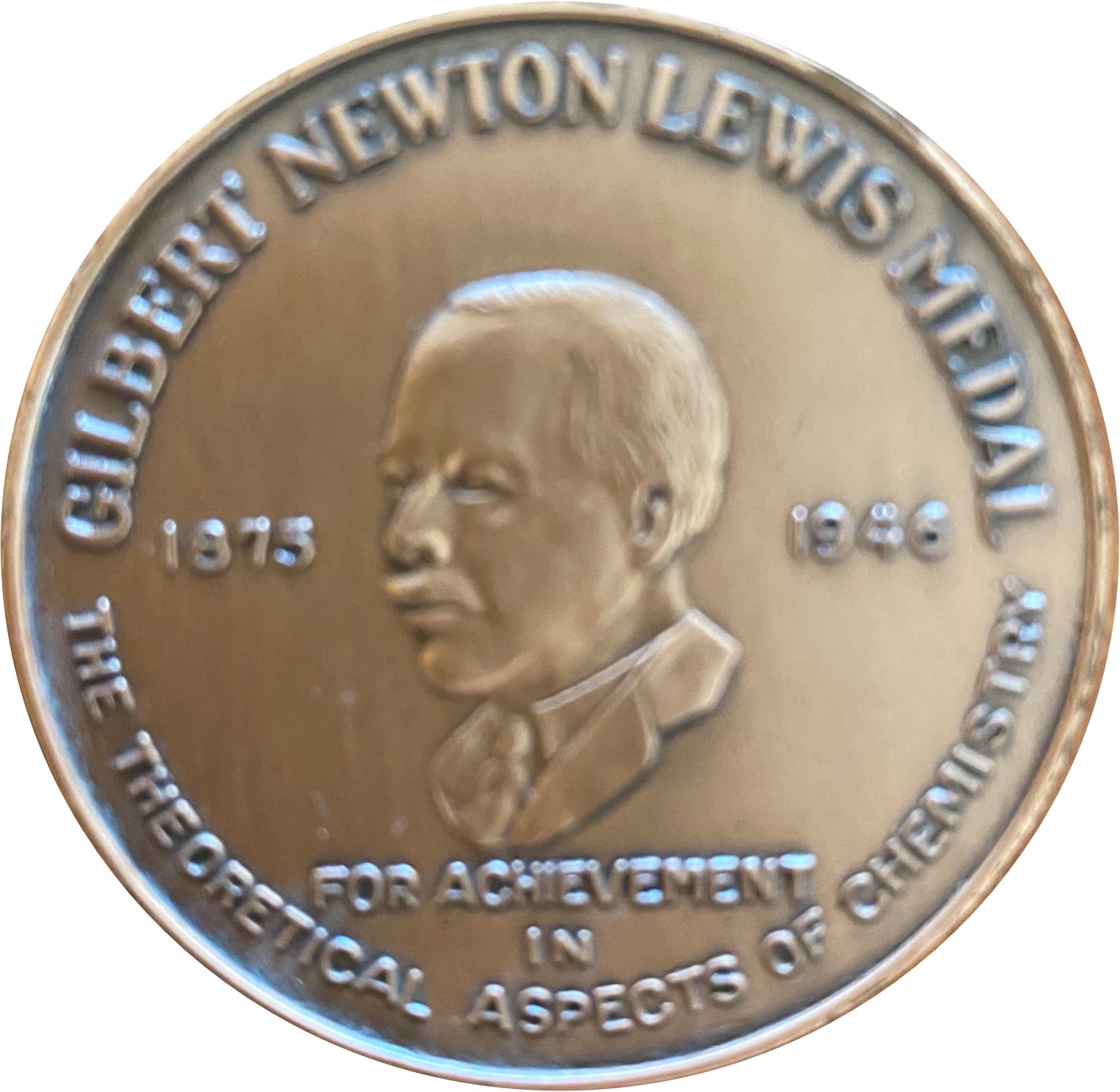 |
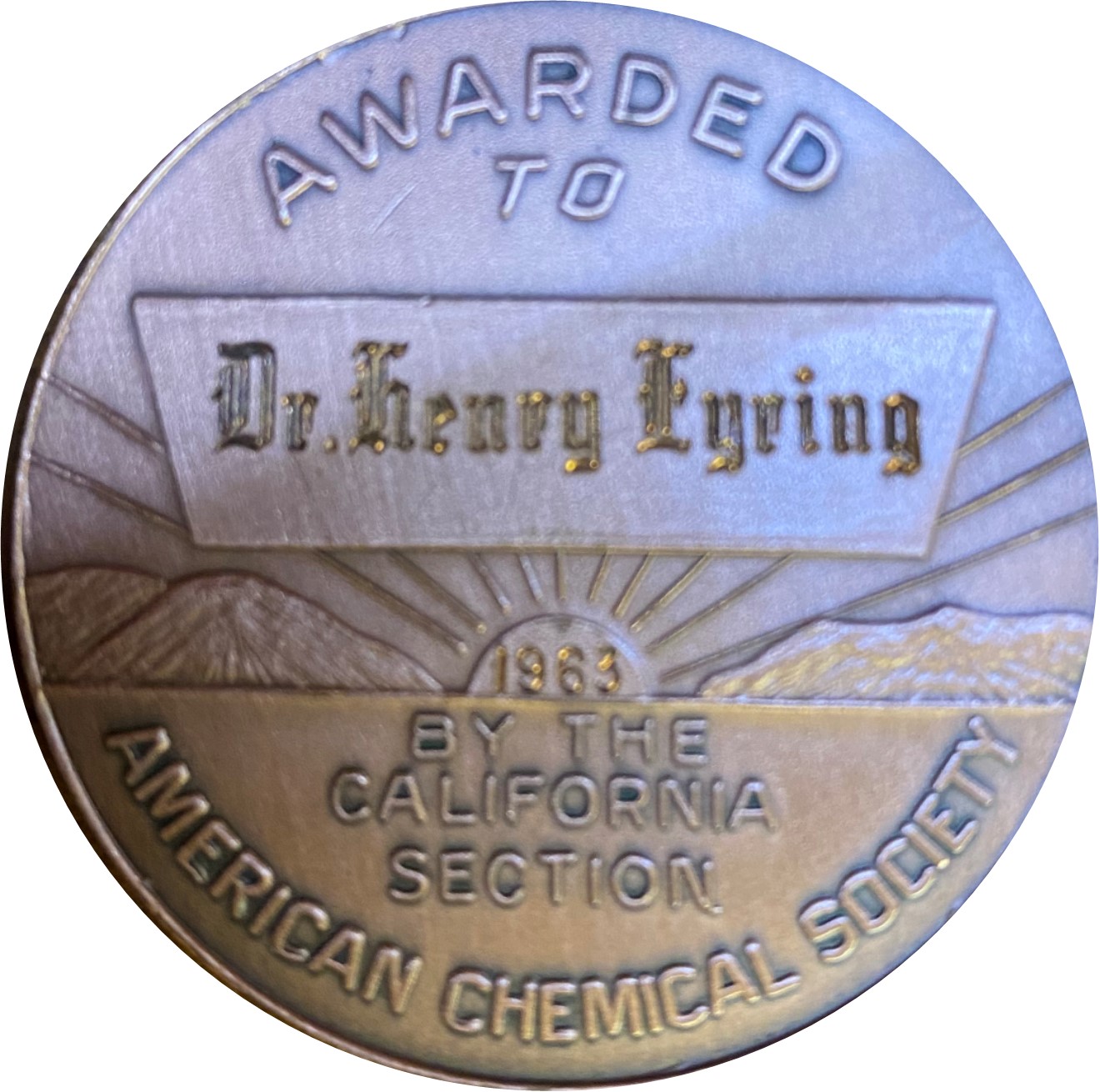 |
G.N. Lewis Medal Awarded by the California section of the A.C.S. in 1963. Presented to Henry Eyring for Achievement in the Theoretical Aspects of Chemistry. Gilbert Newton Lewis was a famous Chairman of the Chemistry Department at Berkeley. |
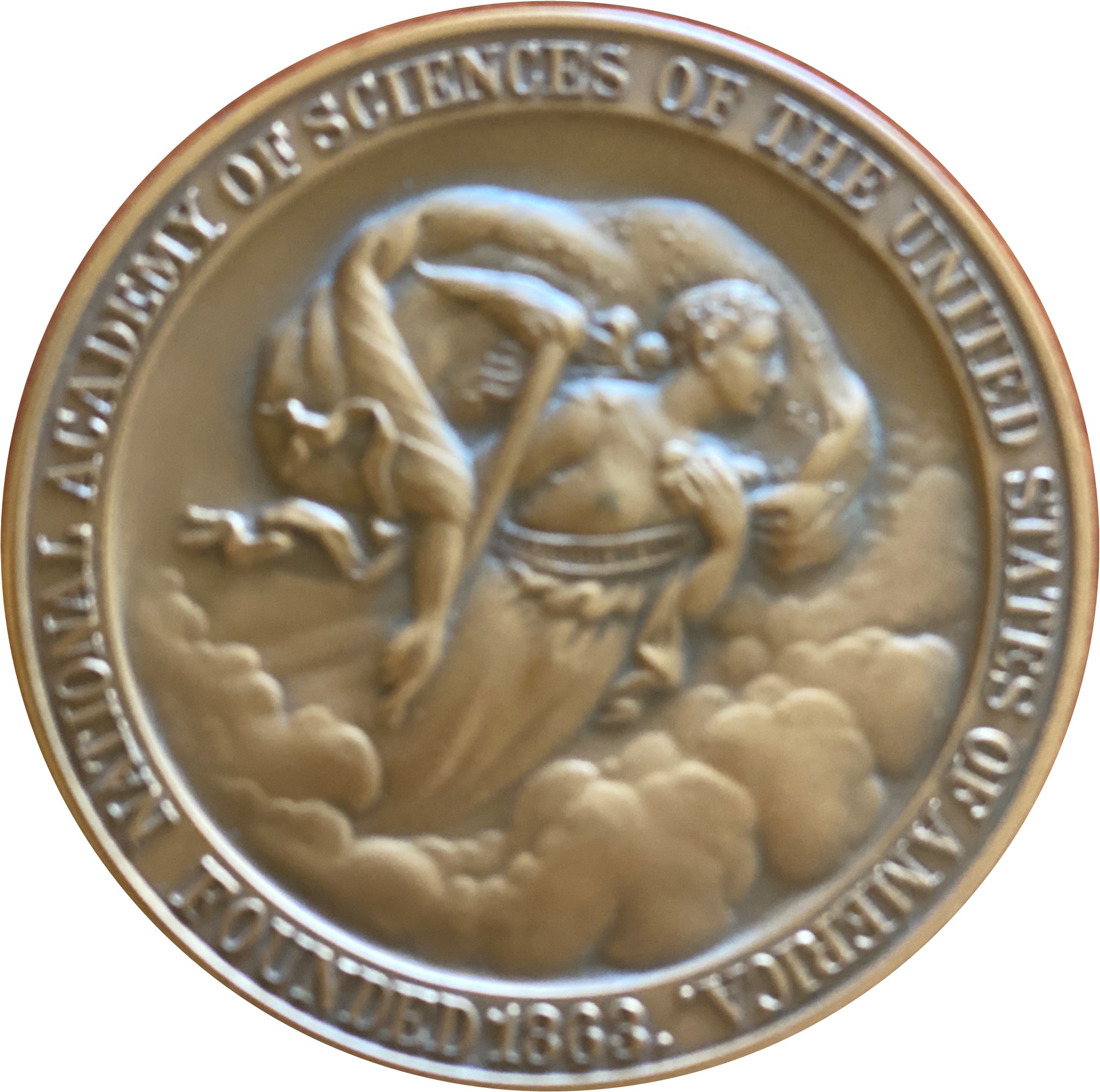 |
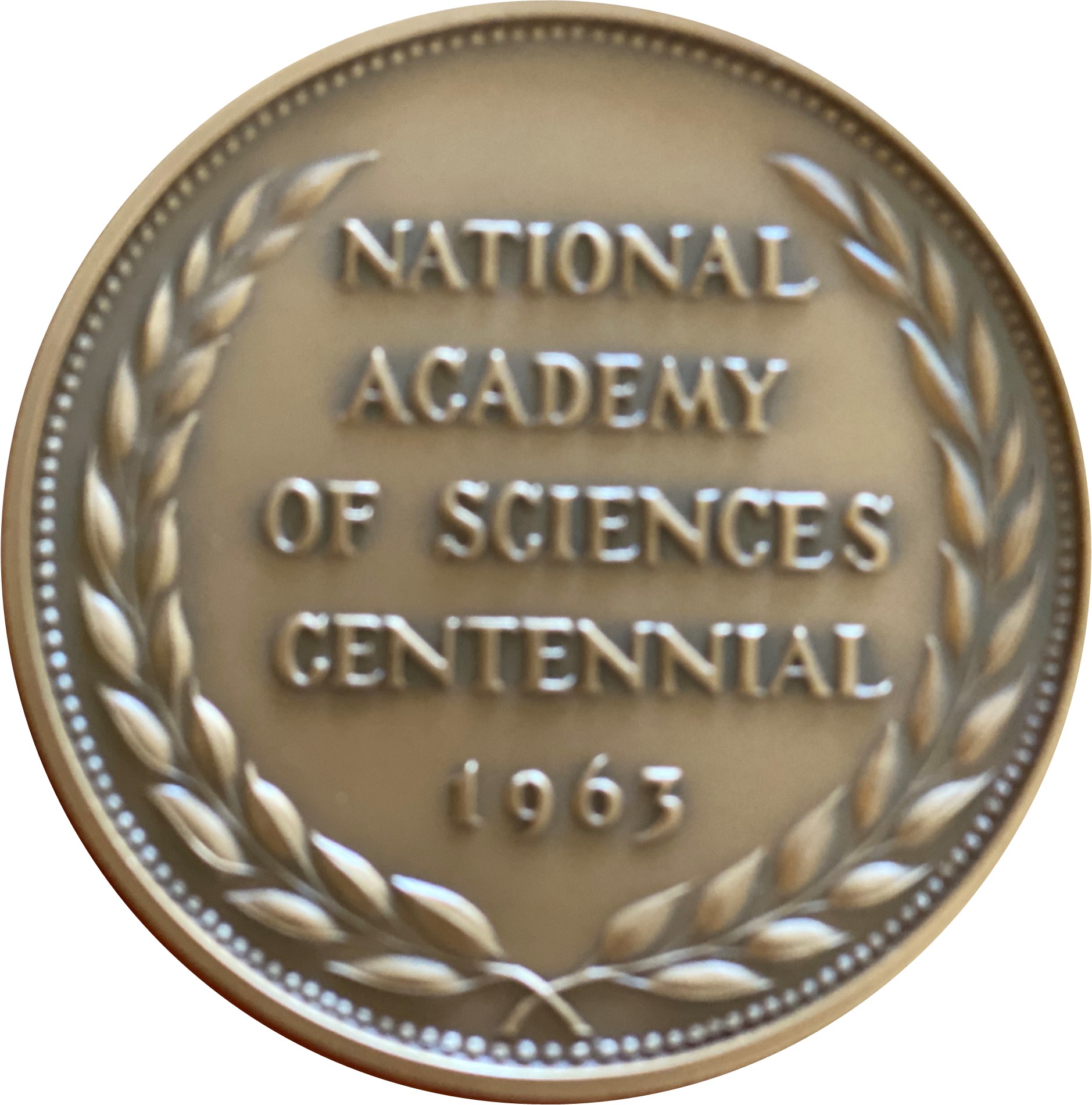 |
National Academy of Science Medal Presented to Henry Eyring in 1963. Awarded by the National Academy of Sciences of the United States of America during the celebration of their Centennial year. |
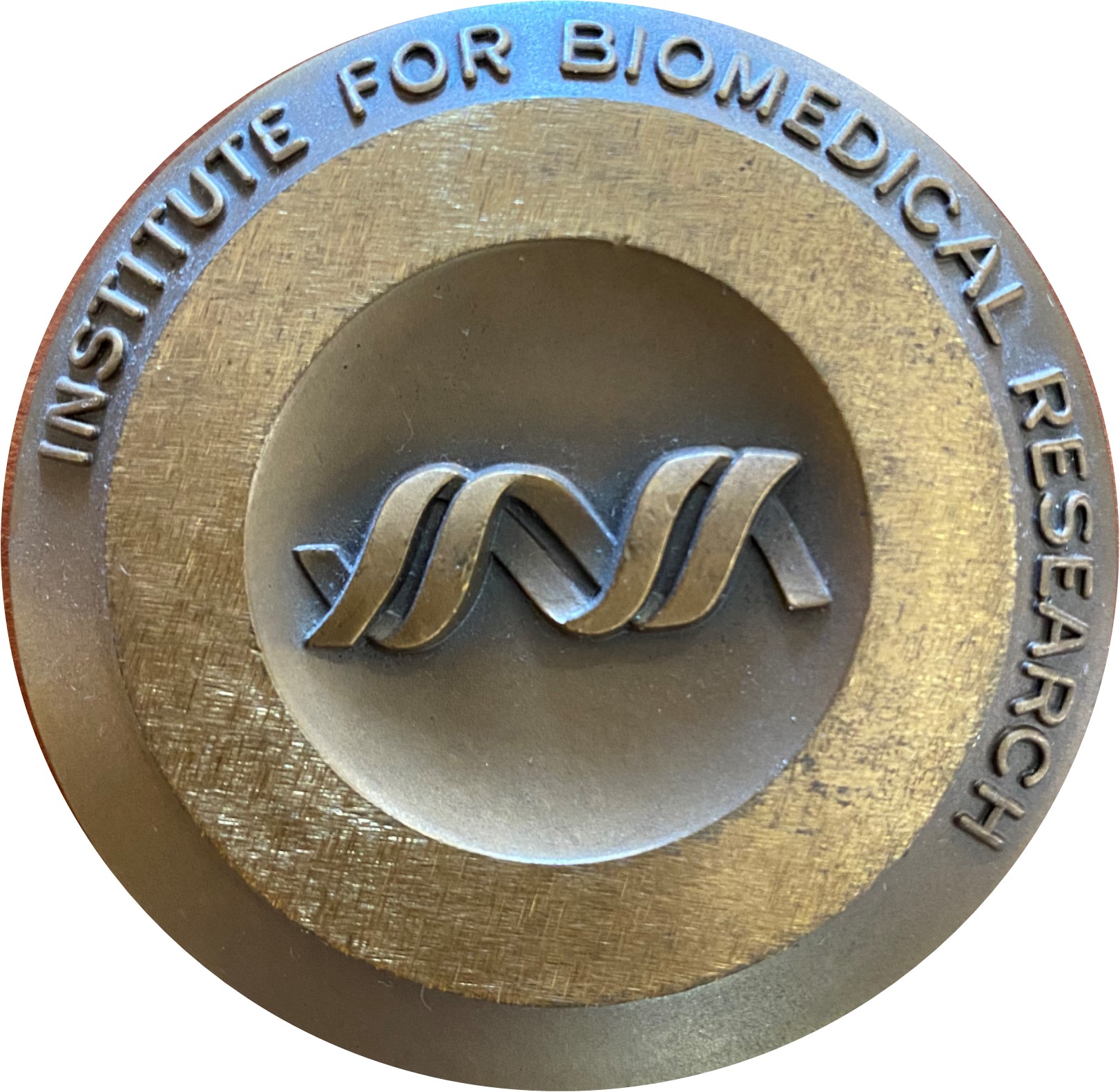 |
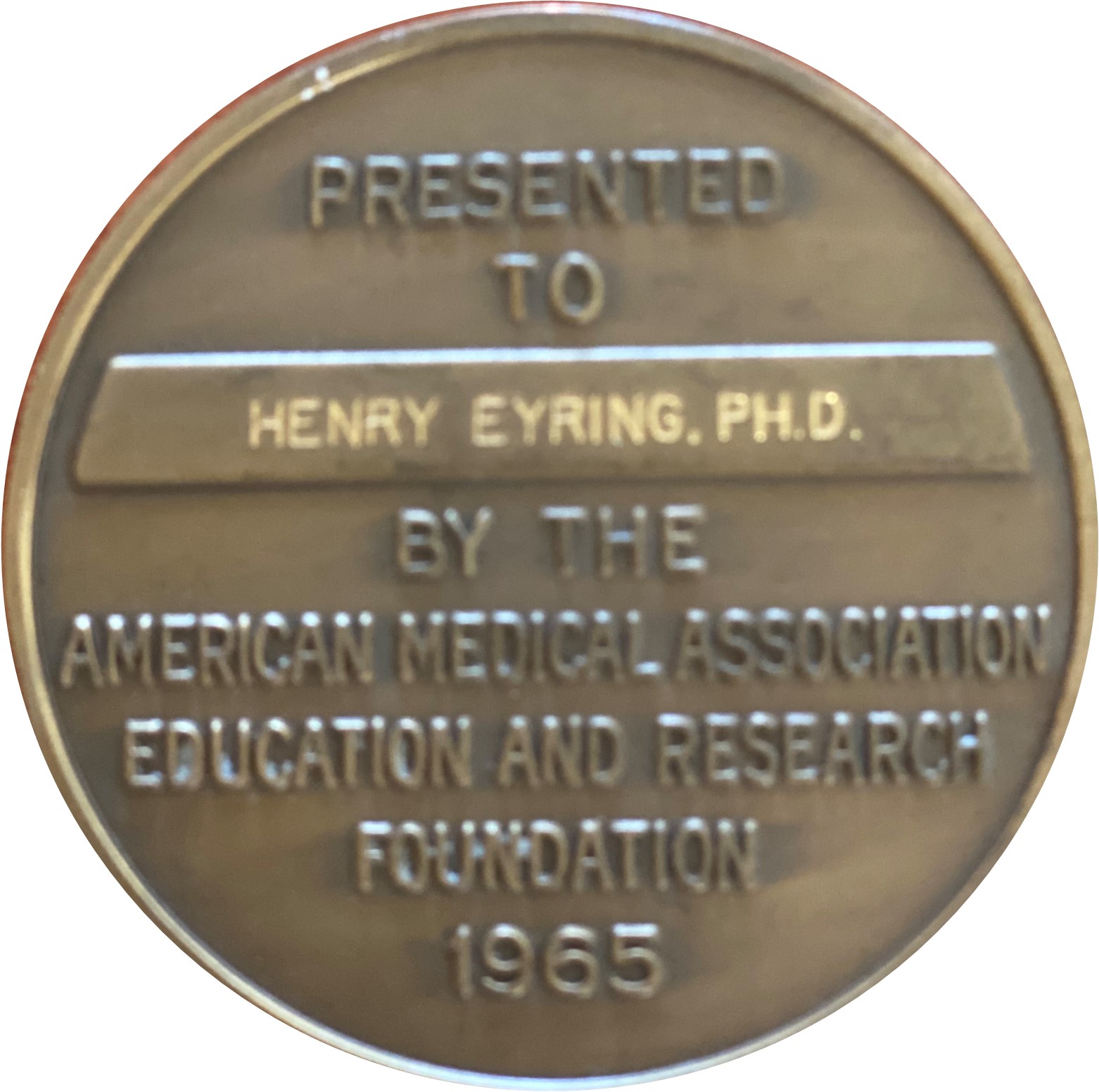 |
Institute for Biomedical Research Awarded by the American Medical Association Education and Research Foundation in 1965. Presented to Henry Eyring for his Contributions to Medical Research. |
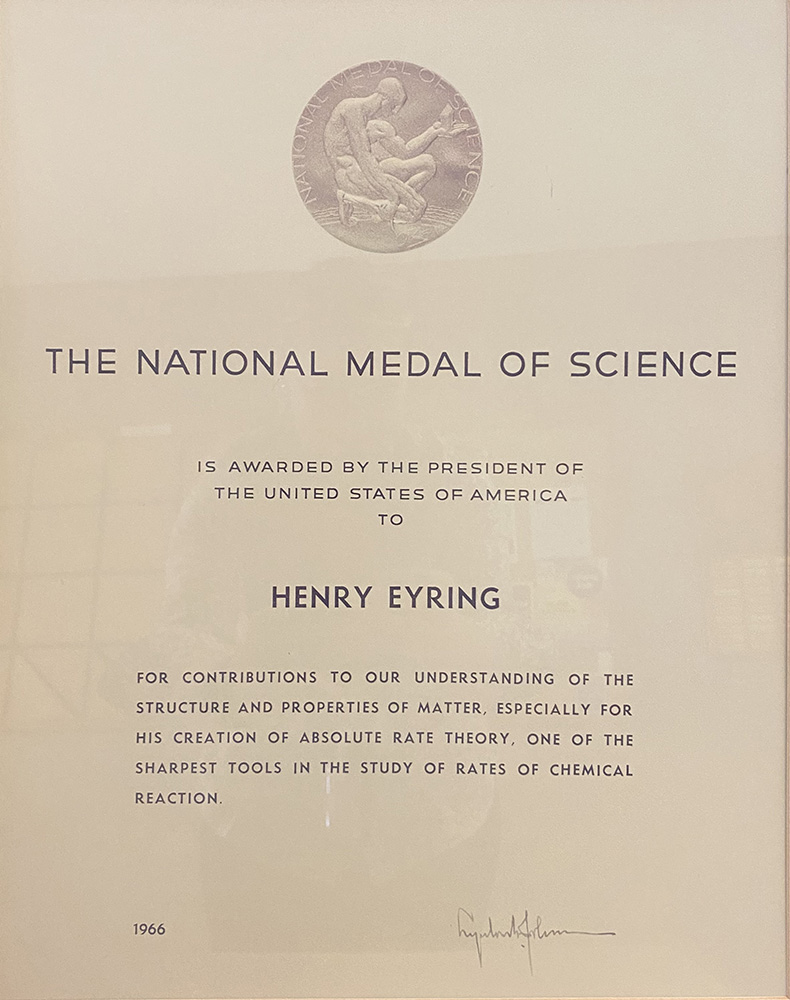 |
The National Medal of Science Personally presented to Henry Eyring in 1966 by Lyndon B. Johnson, the President of the United States of America. Awarded for his contributions to the understanding of the structure and properties of matter, especially for the creation of the absolute rate theory, one of the sharpest tools in the study of the rates of chemical reaction. |
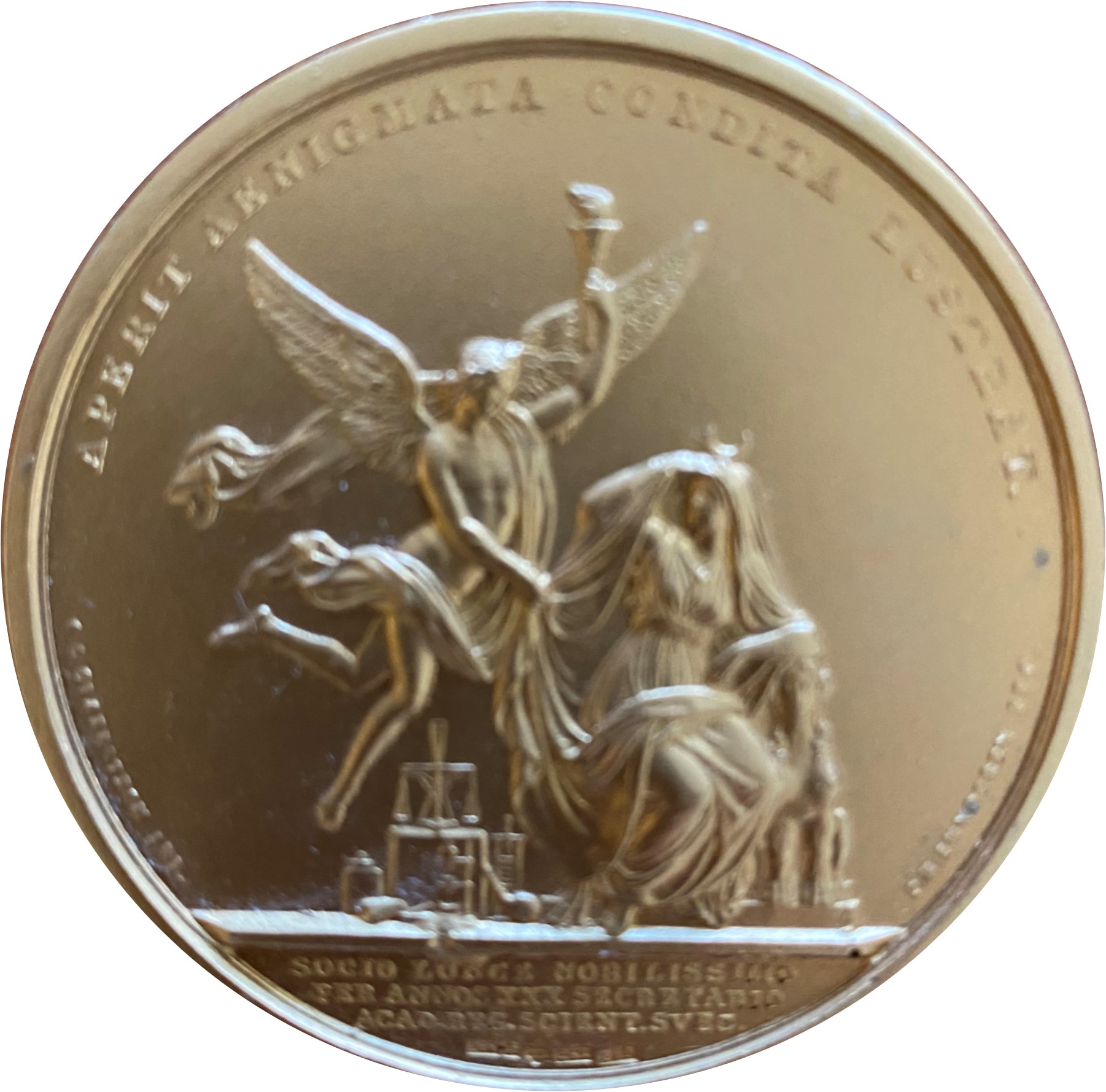 |
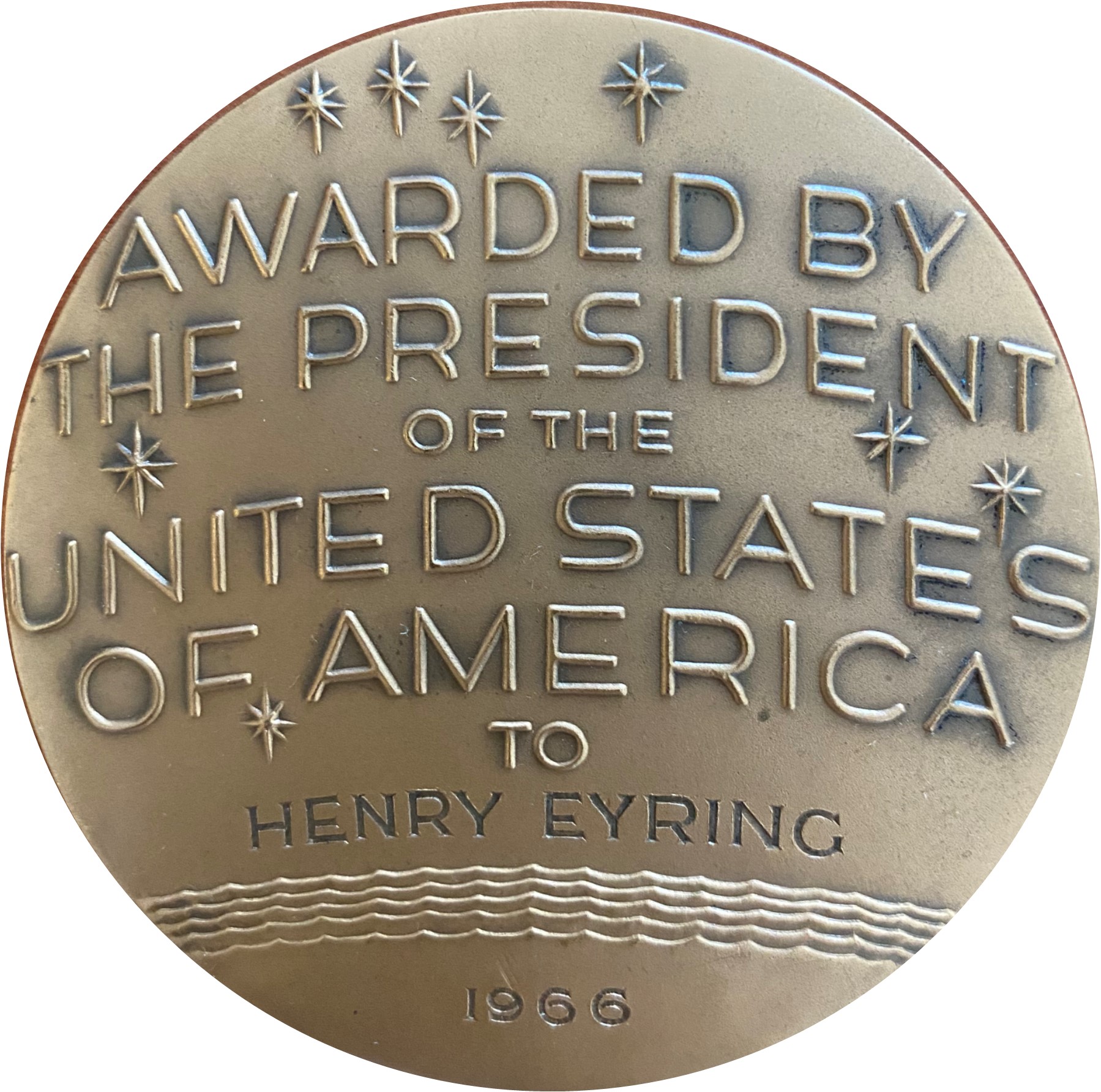 |
National Medal of Science Awarded in 1966 to Henry Eyring for his contributions to understanding the structure and properties of matter, and especially for his creation of the absolute rate of theory. Personally presented to Henry Eyring by the President of the U.S.A. Lyndon B. Johnson. |
 |
The Irving Langmuir Award Chemical Physics Research Prize was awarded in 1968 by the San Francisco section of the American Chemical Society. |
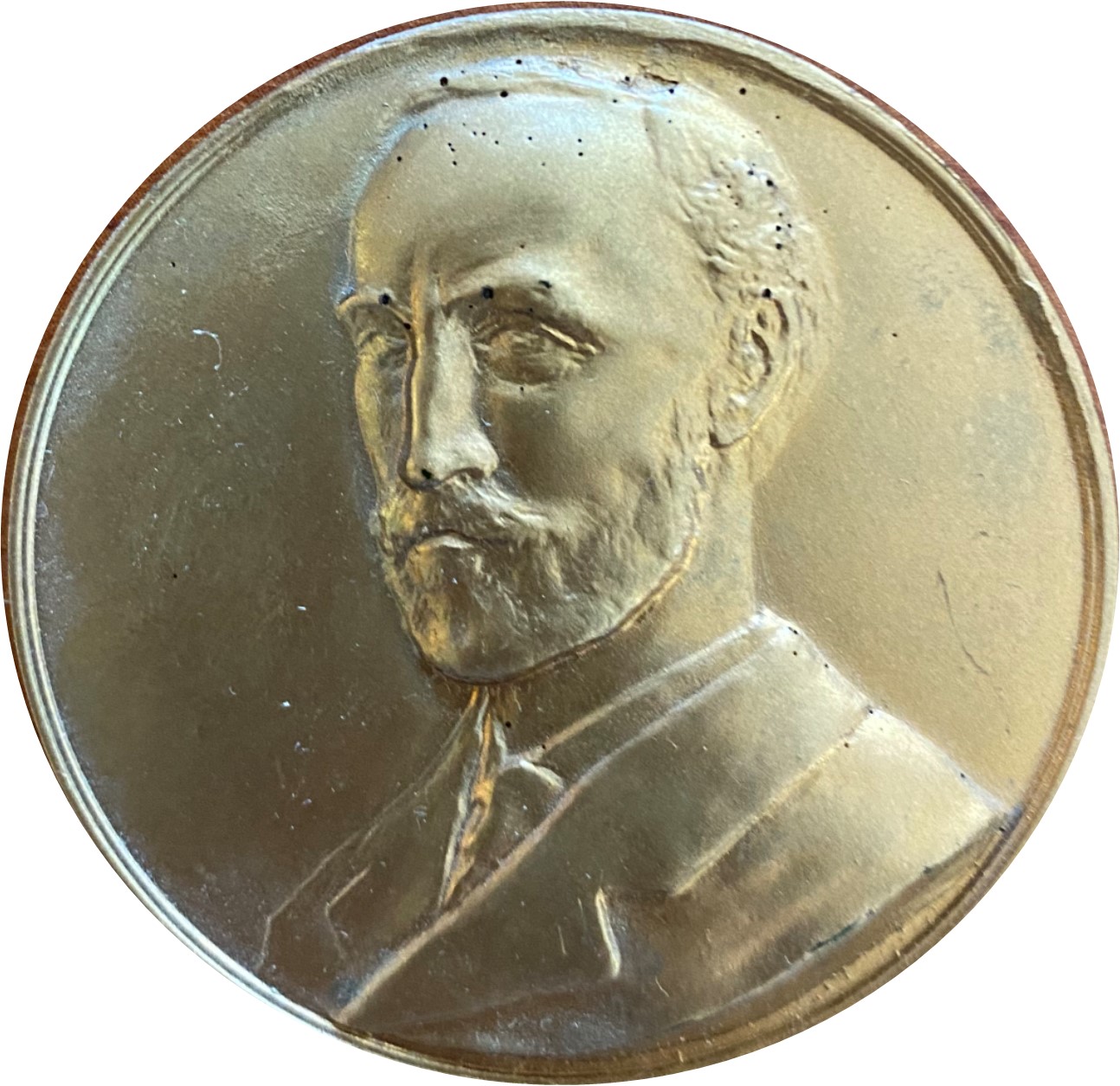 |
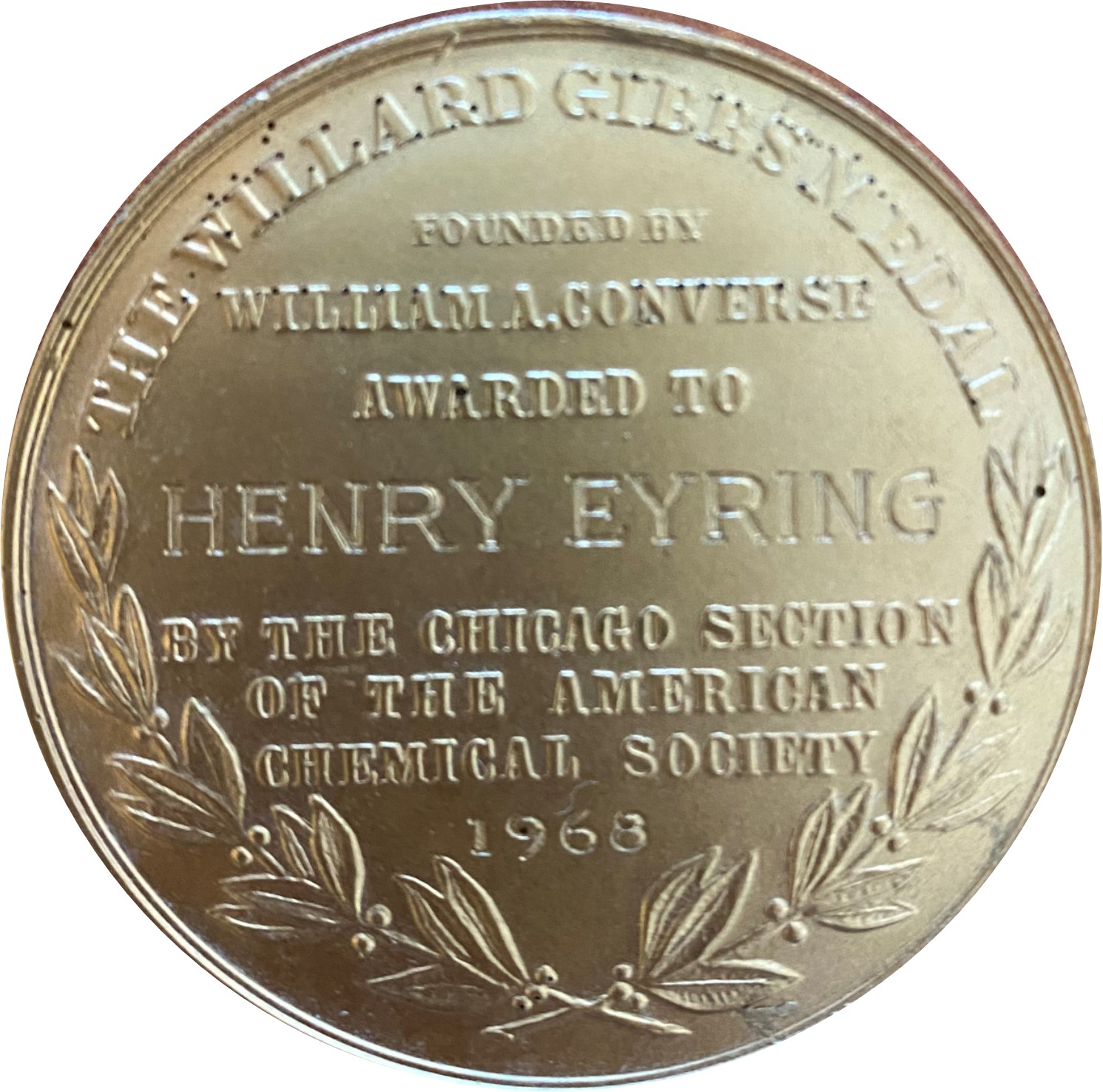 |
W. Gibbs Medal Awarded by the Chicago section of the American Chemical Society in 1968. Presented to Henry Eyring for his Distinguished Research. J. Willard Gibbs made many great discoveries in what is now called statistical mechanics. |
 |
The Dickinson College Award Presented in 1974 to Henry Eyring for his distinguished contributions to the welfare of mankind through Chemistry. |
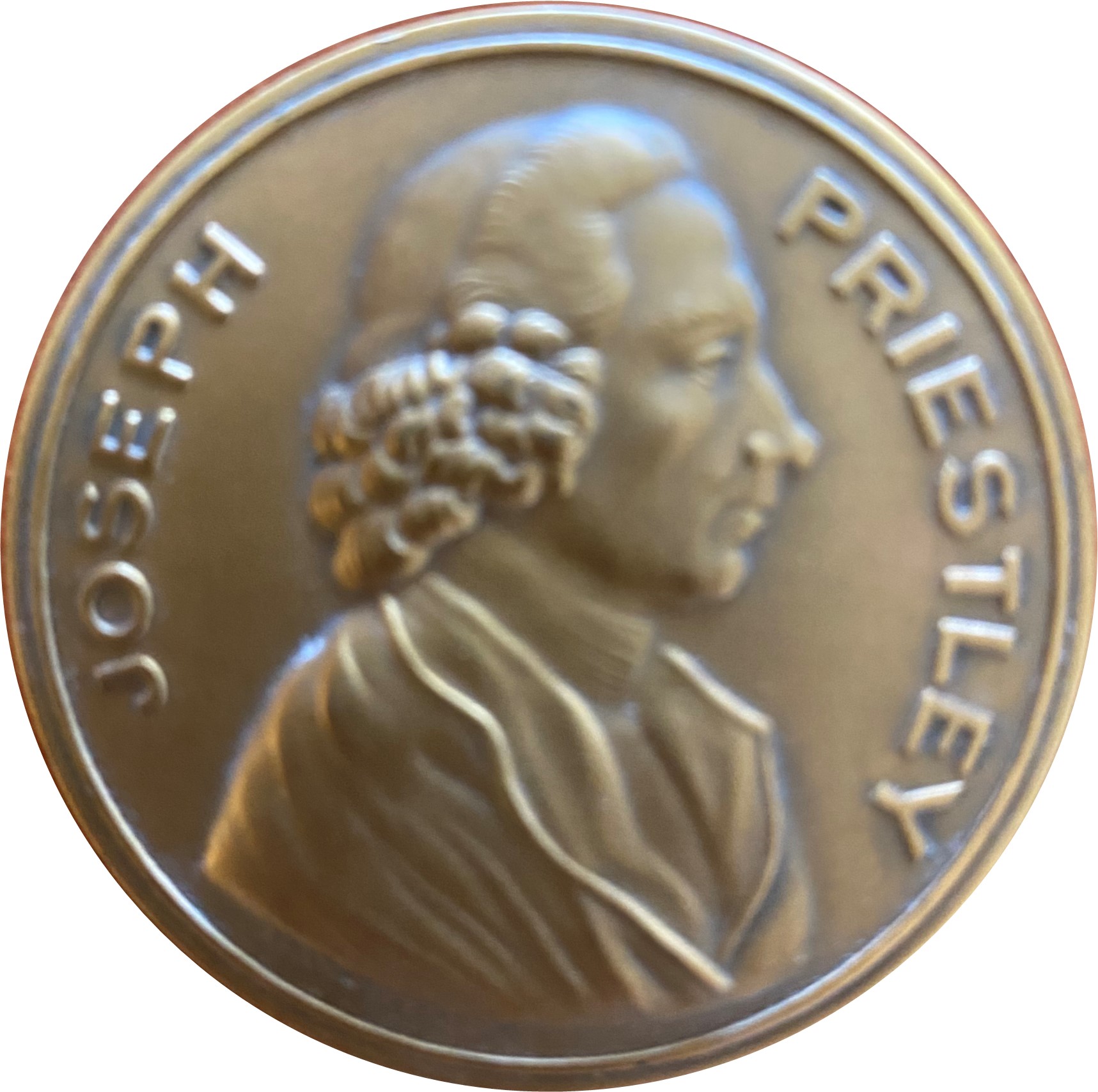 |
 |
Joseph Priestly Medal Awarded to Henry Eyring by the A.C.S. in 1975 for Distinguished Services to Chemistry. It is perhaps the most prestigious medal awarded by the A.C.S. Joseph Priestly was the discoverer of elemental oxygen. |
 |
 |
Jacobus Berzelius Medal Awarded in 1979. Personally presented to Henry Eyring in Sweden. This medal is given by the Royal Swedish Academy of Sciences only once every 50 years for Distinguished Research. |
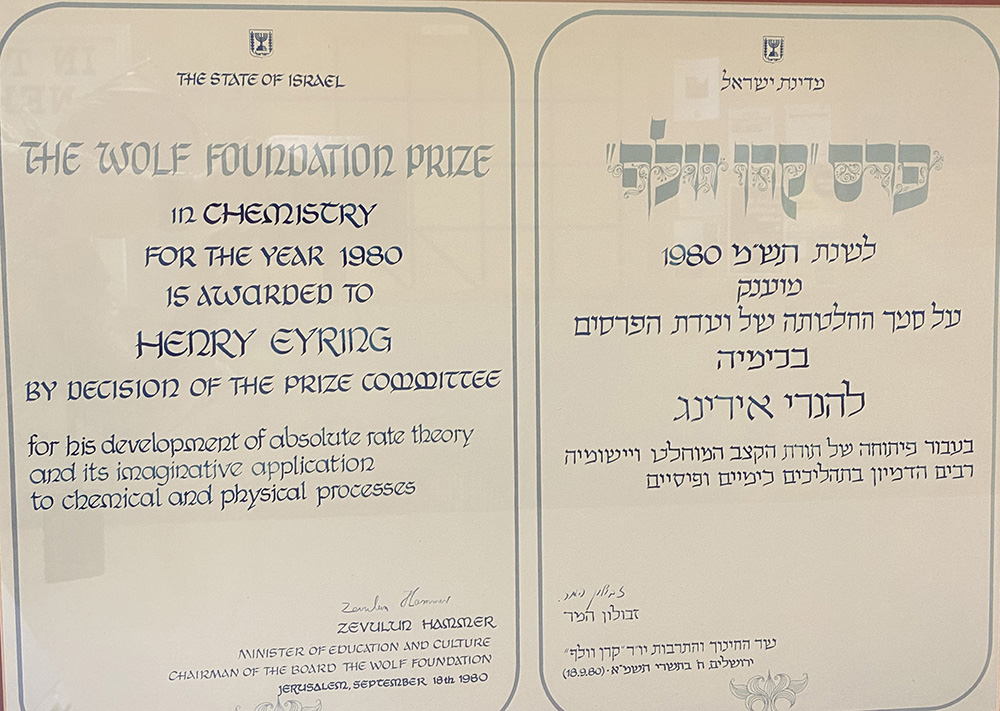 |
The Wolf Foundation Prize $100,000.00 research prize awarded in 1980 by the State of Israel to Henry Eyring for his development of the absolute rate theory and its applications to chemical and physical processes. |
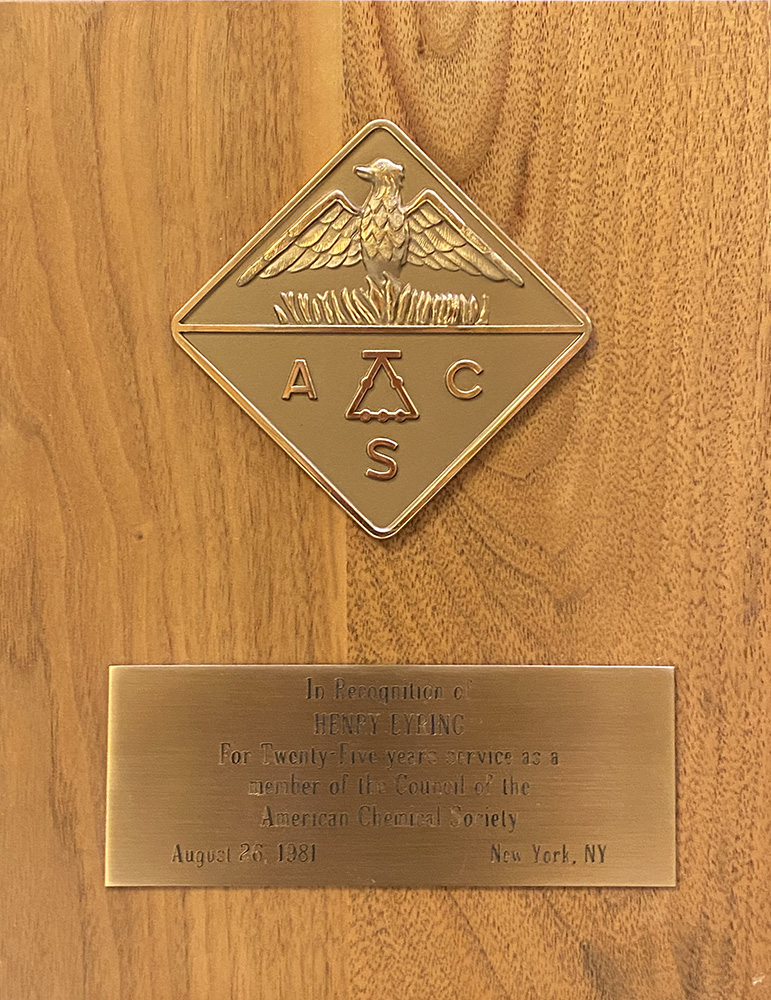 |
Twenty-Five Year Service Award Presented to Henry Eyring in 1981 by the A.C.S. The Council of the American Chemical Society is the legislative body of their more than 130,000-member organization. At one time, Henry Eyring had the honor of serving as the President of the A.C.S. |

